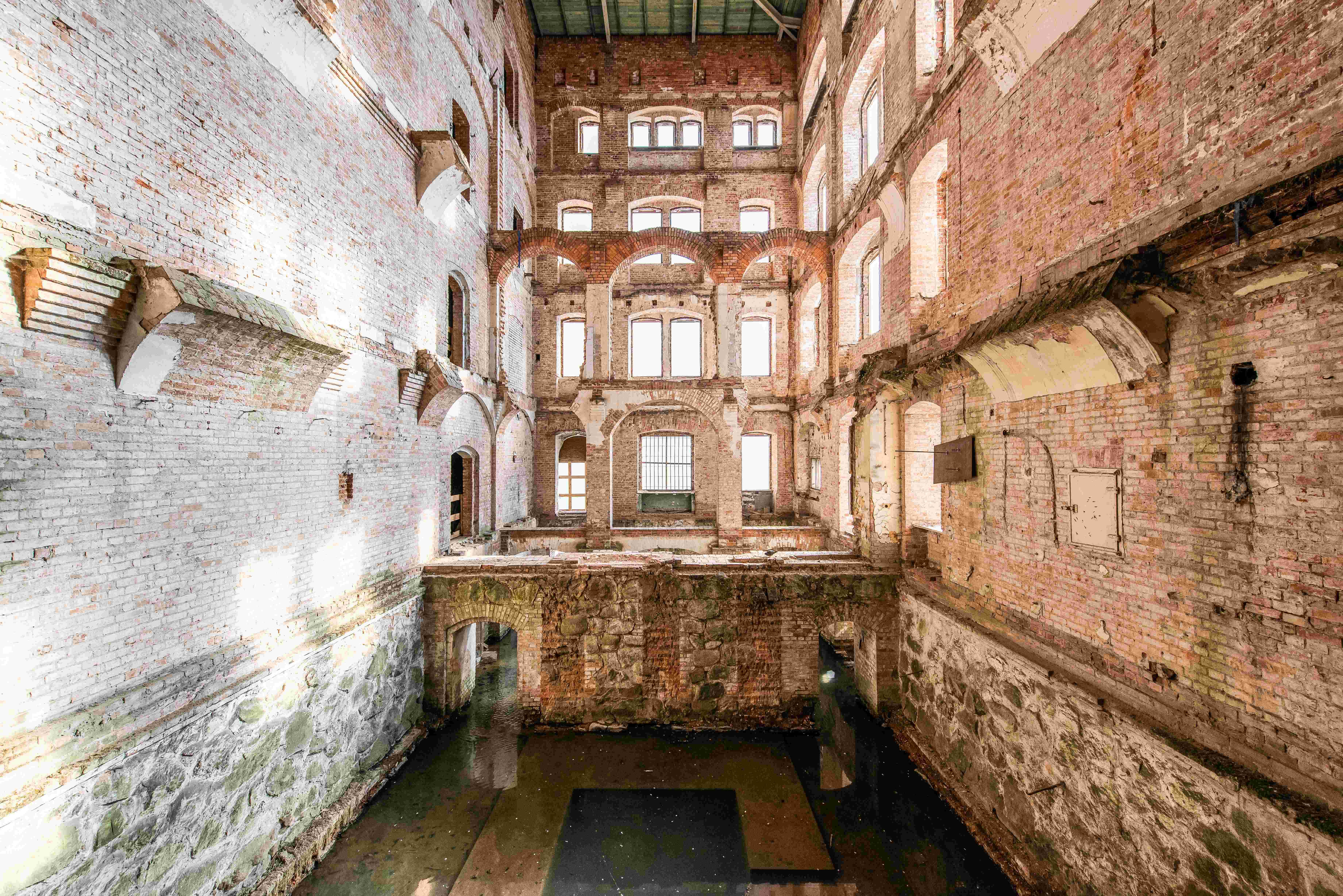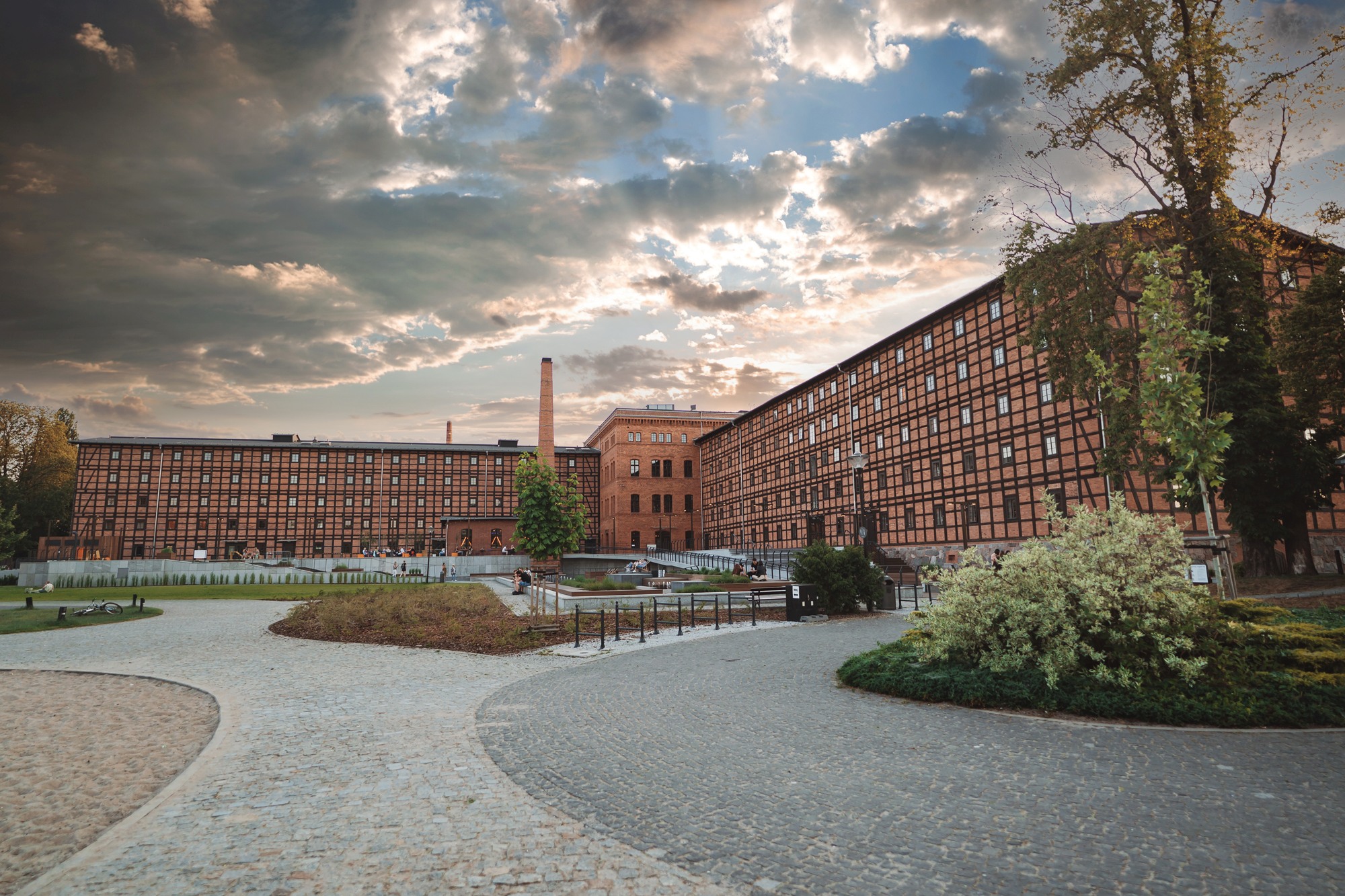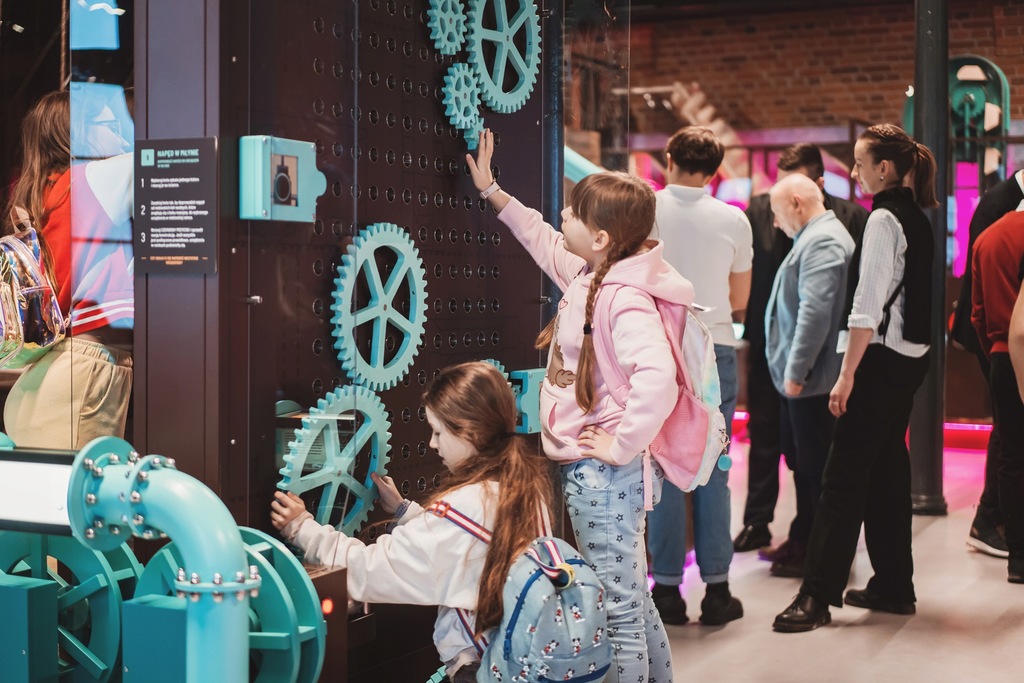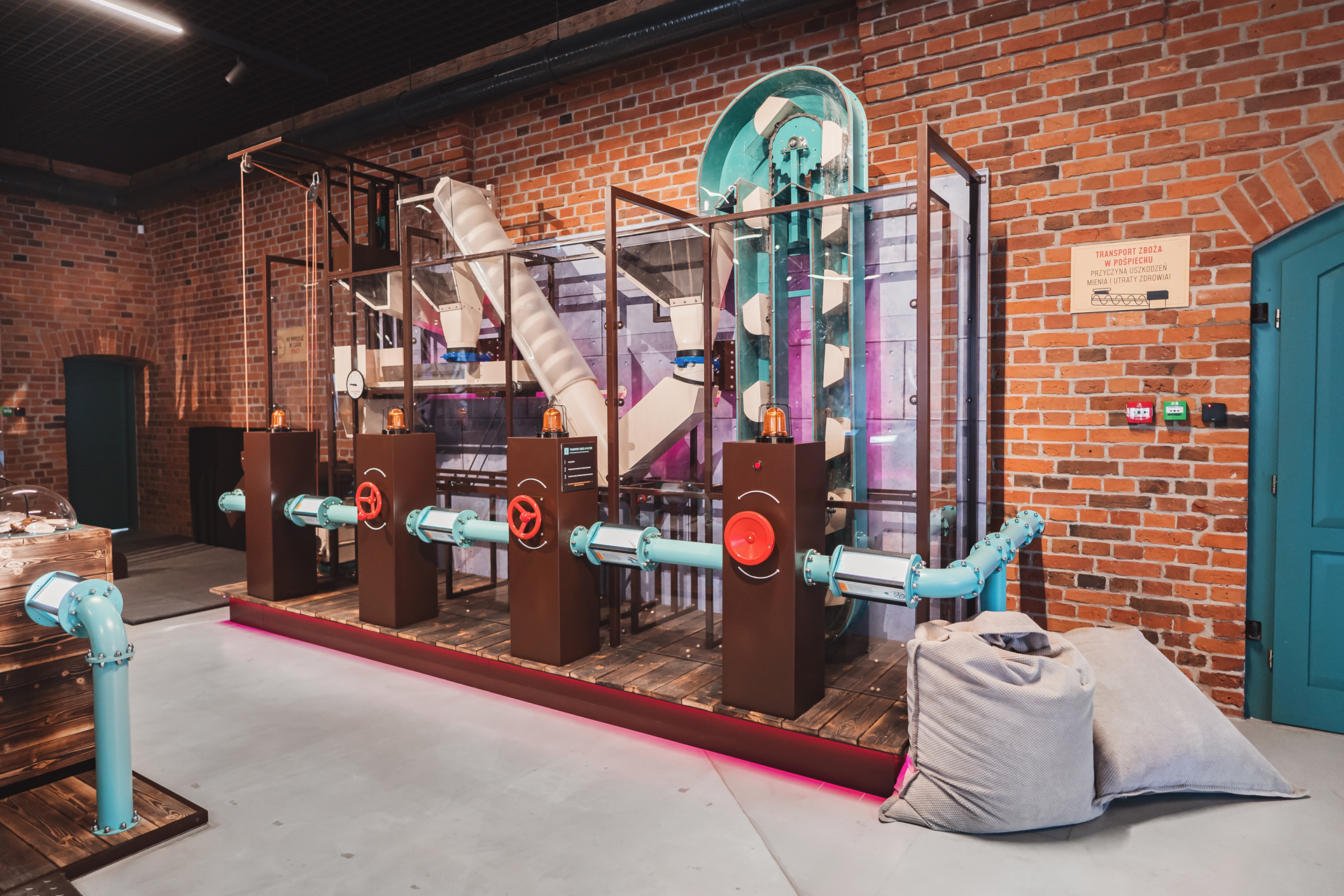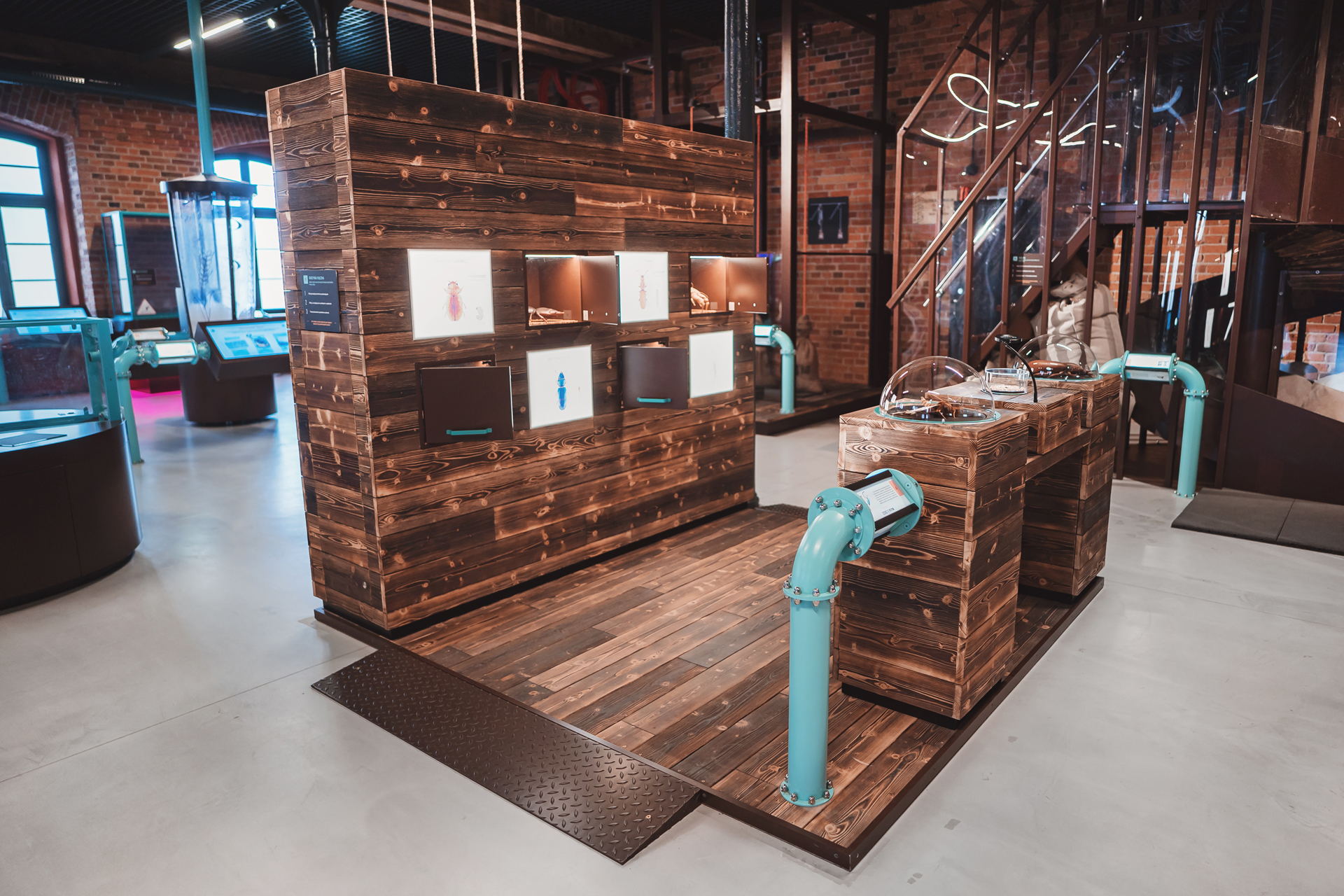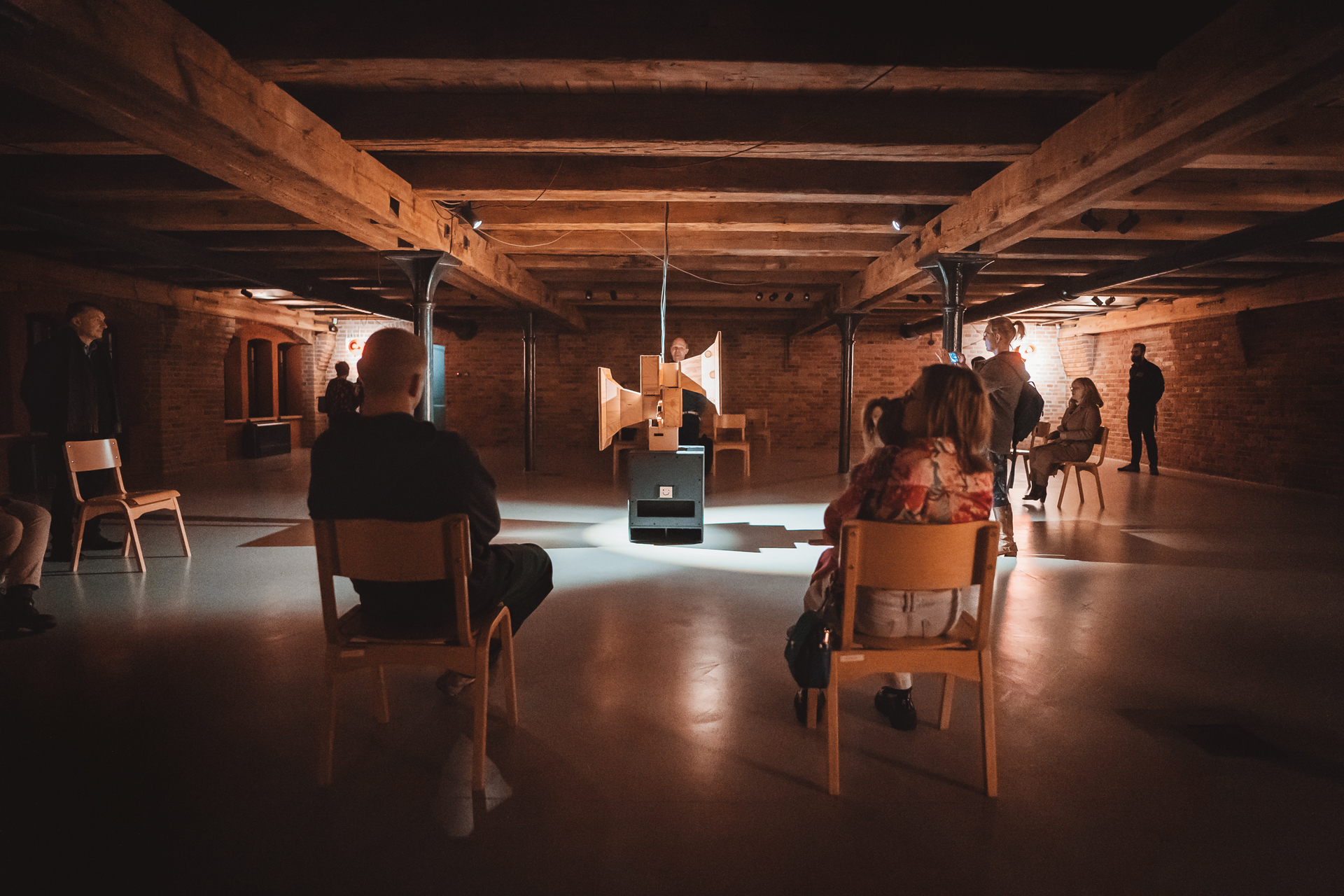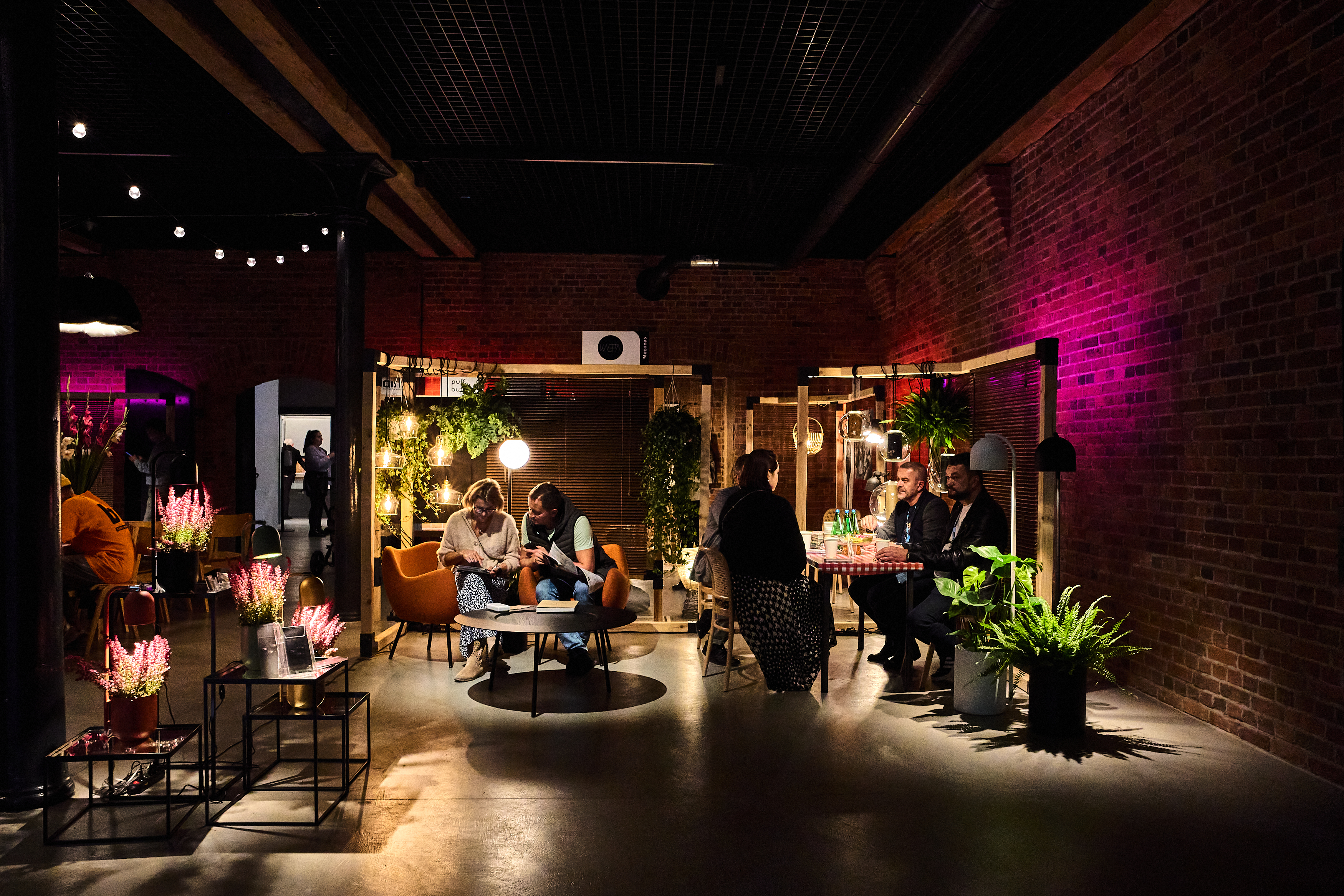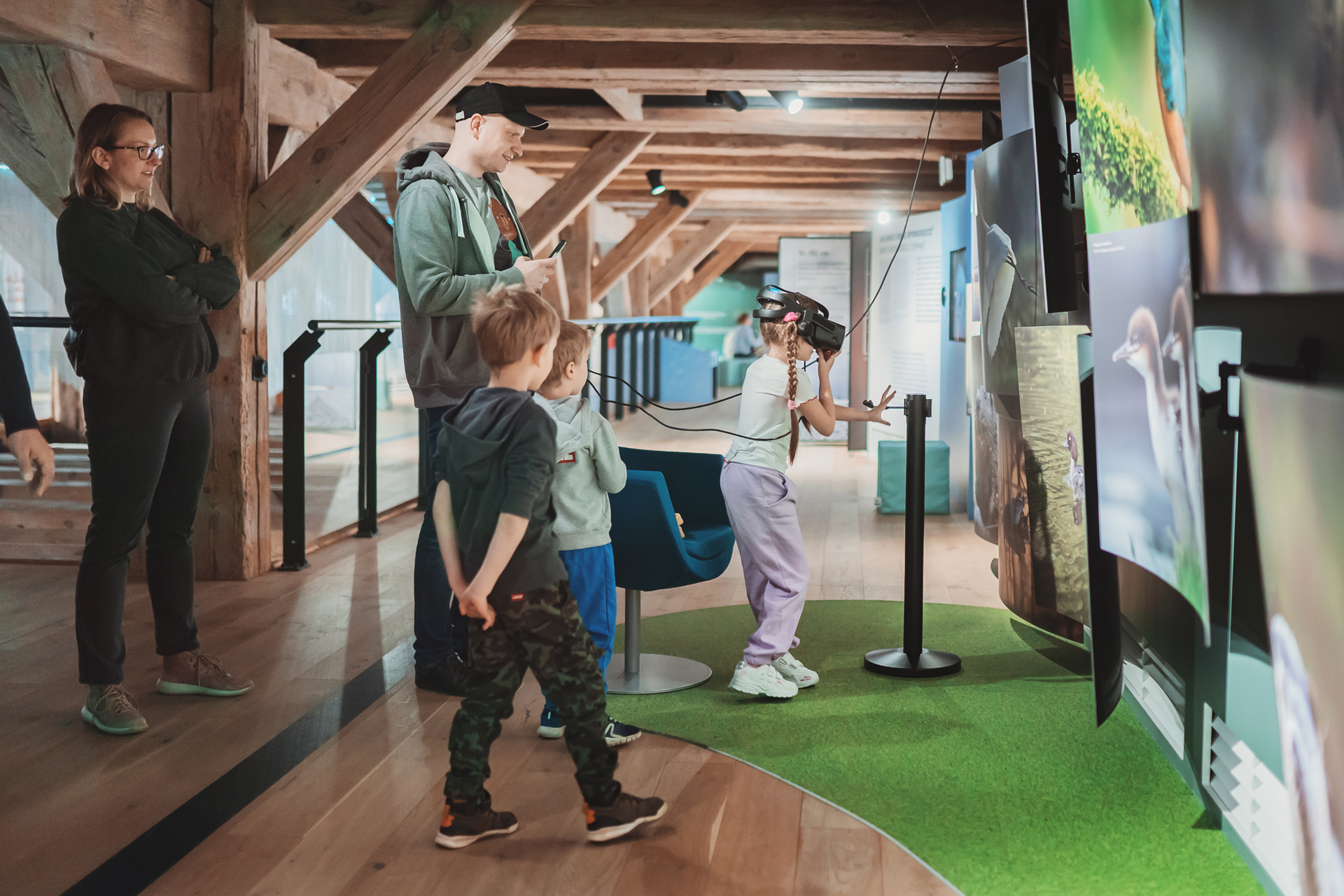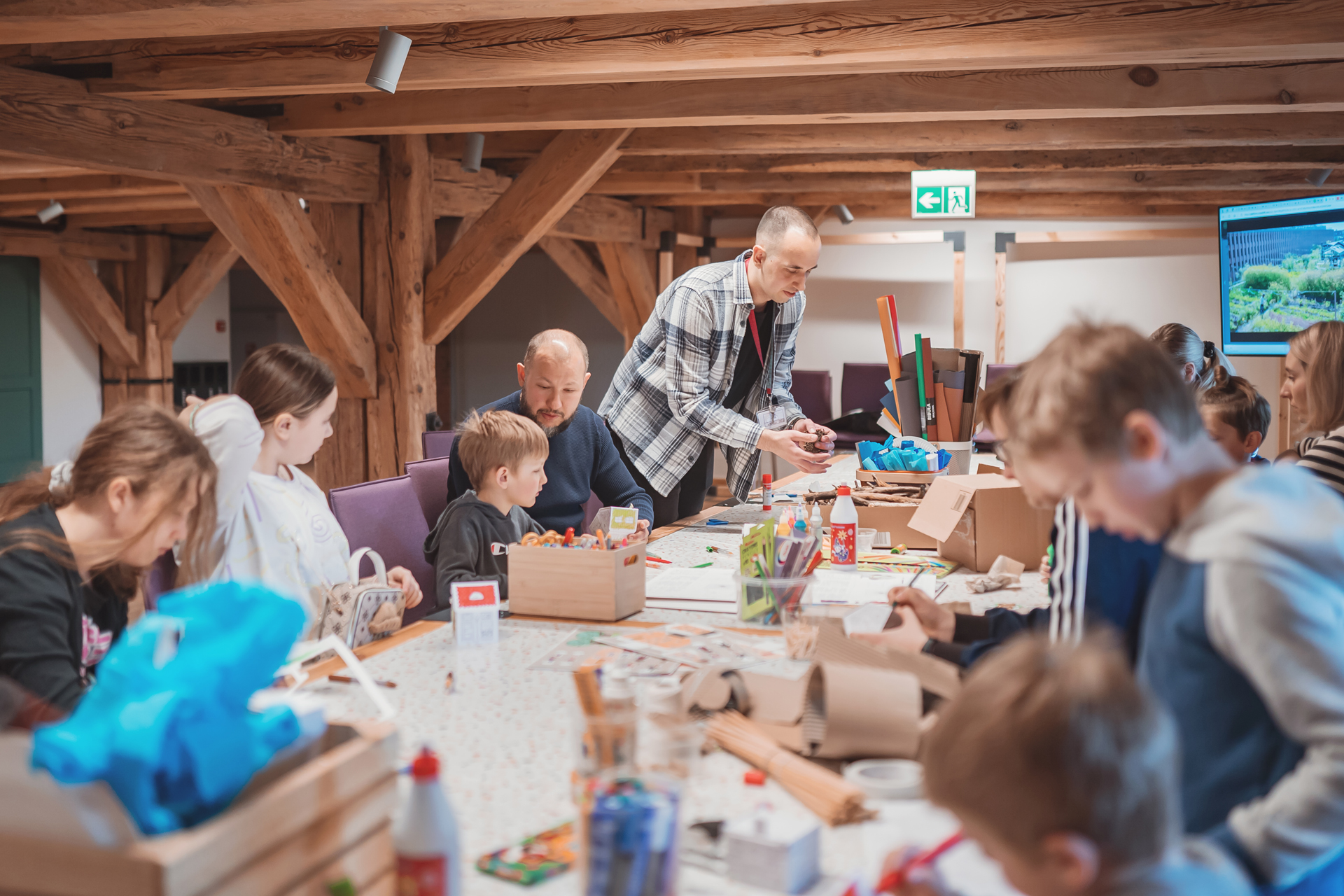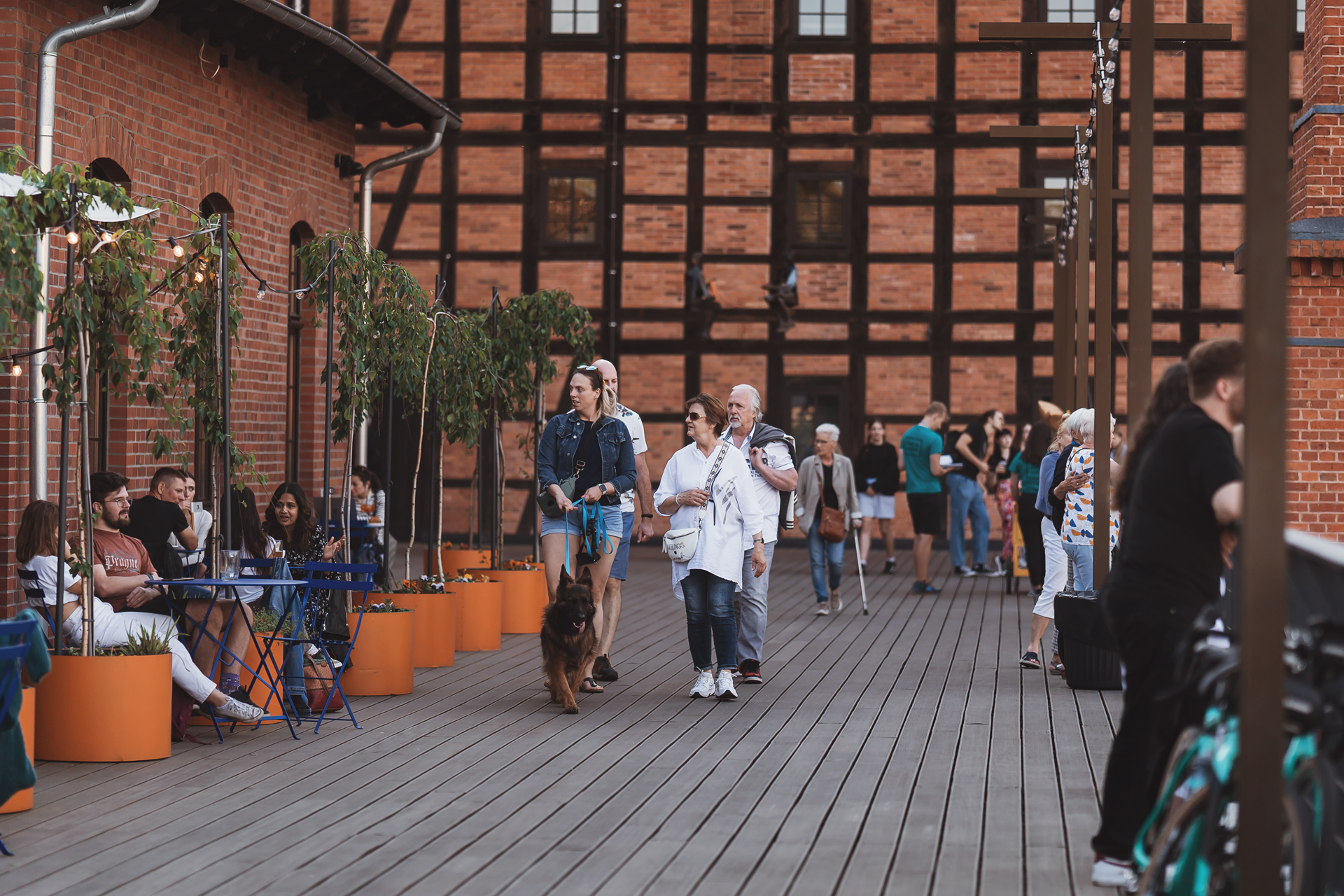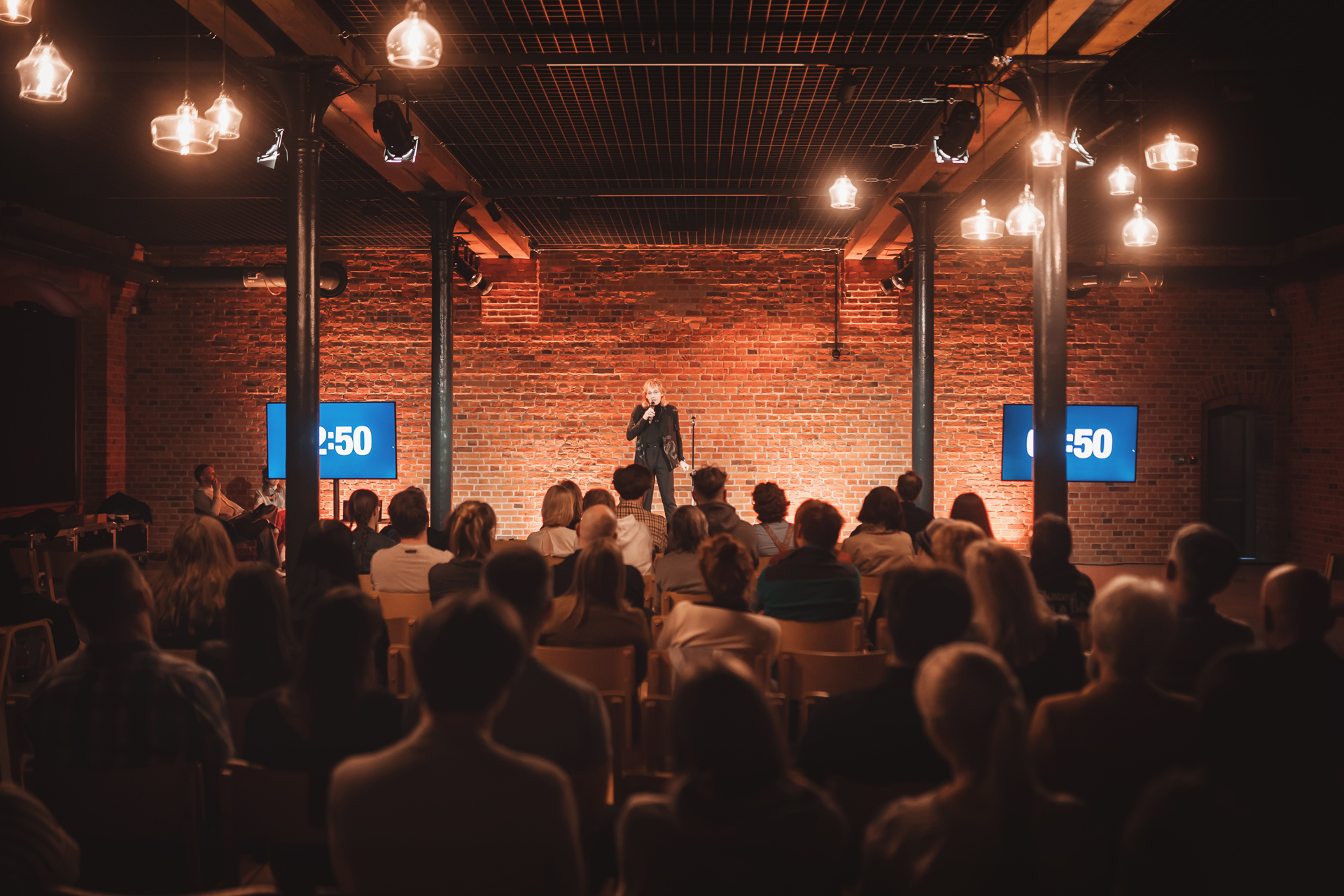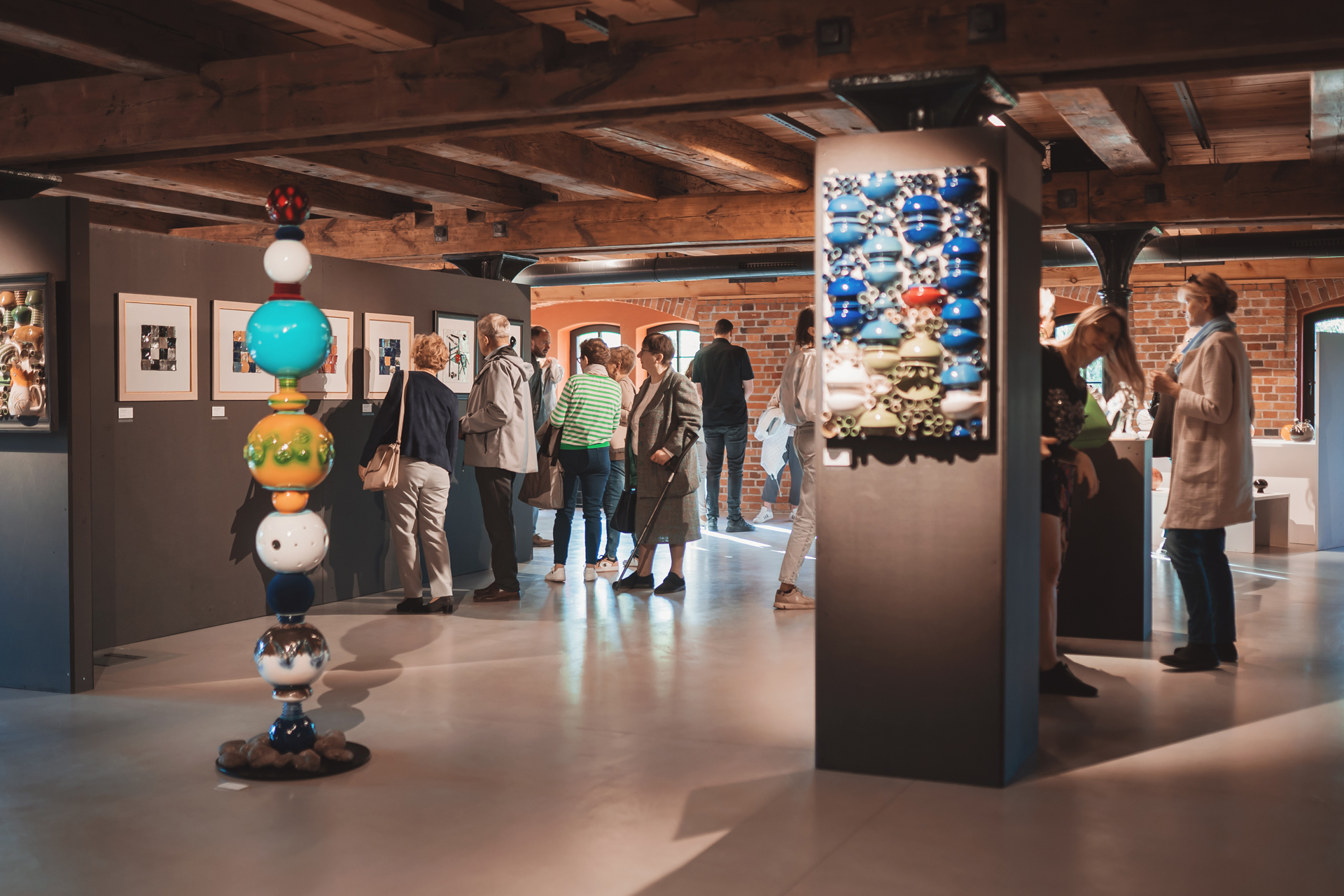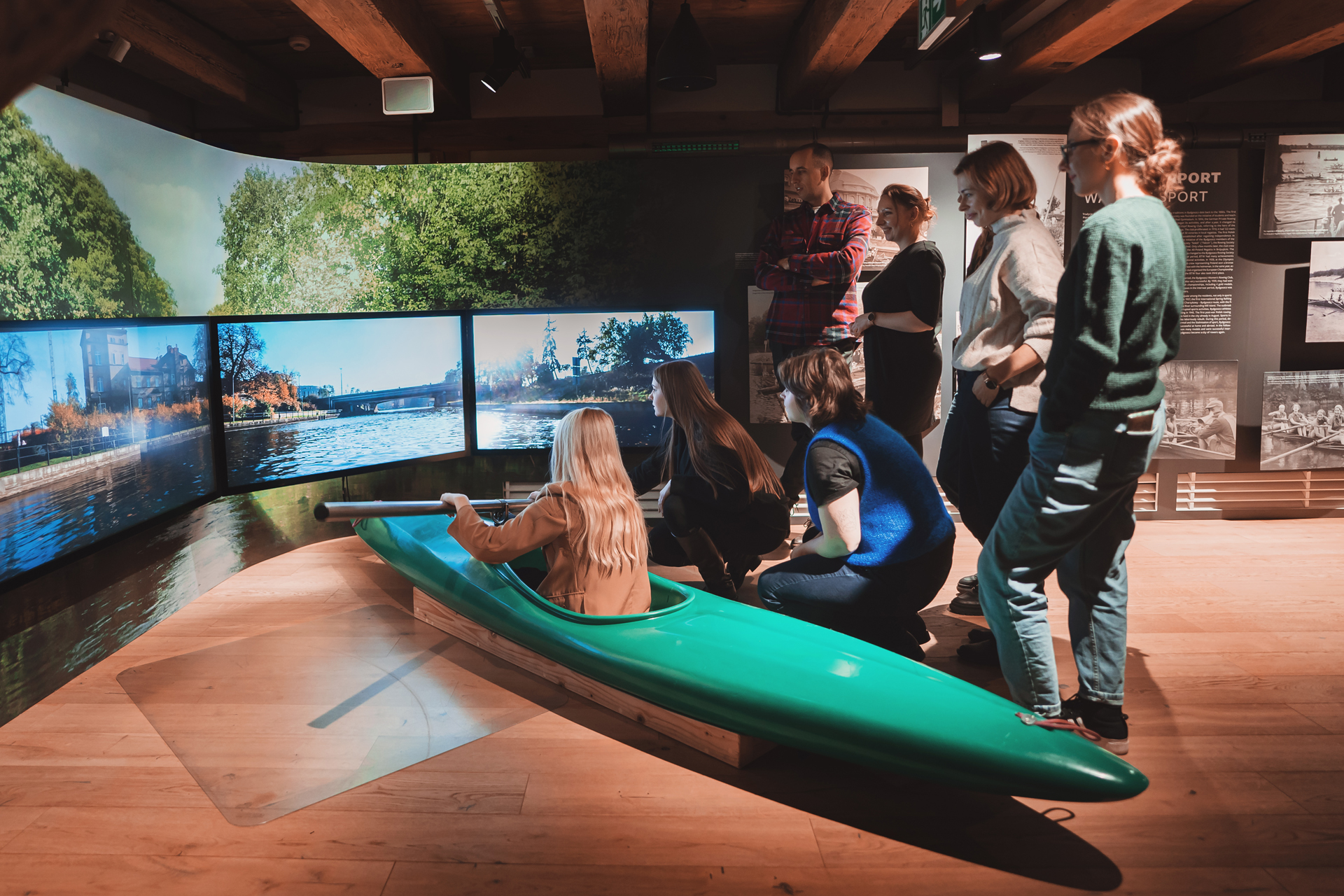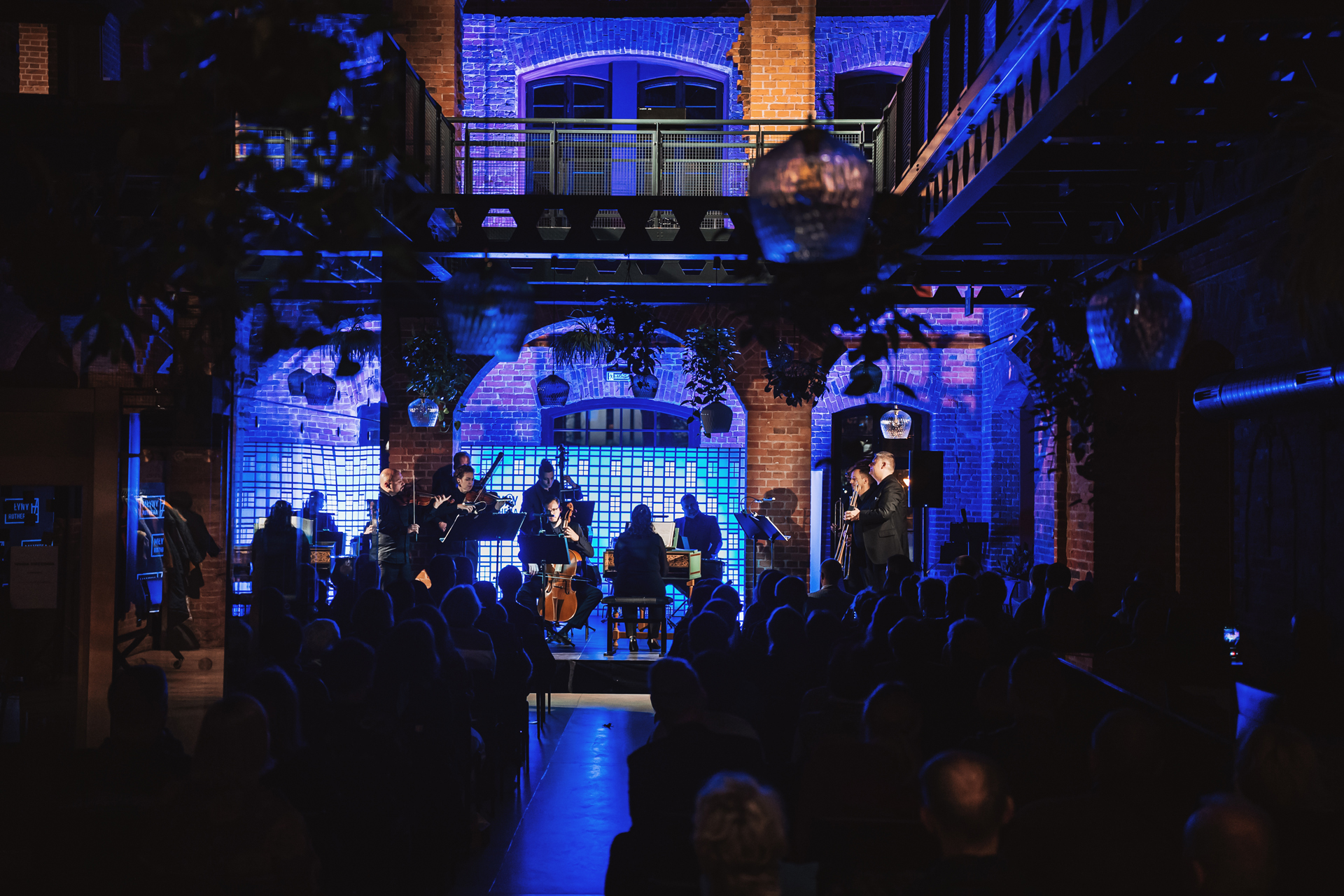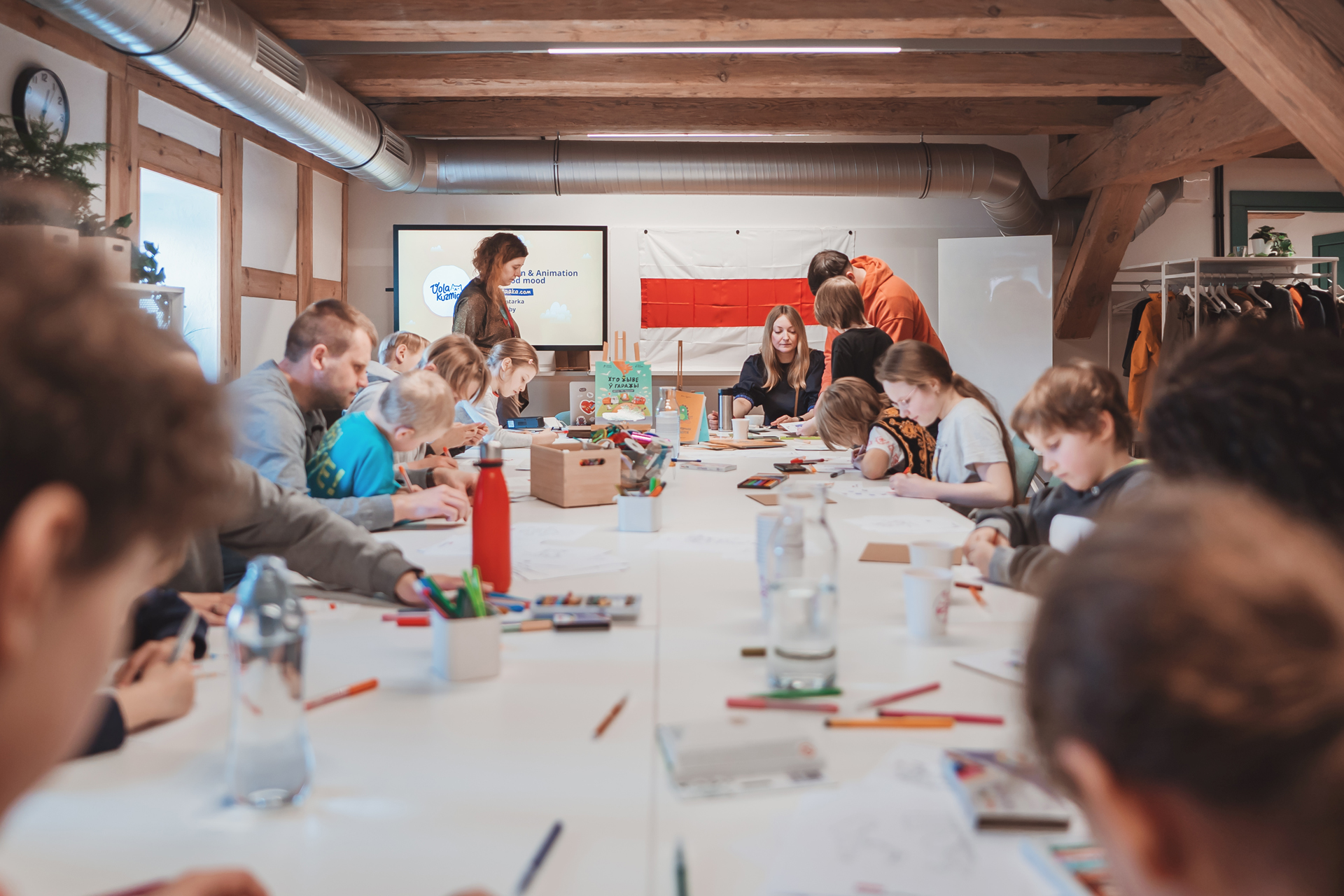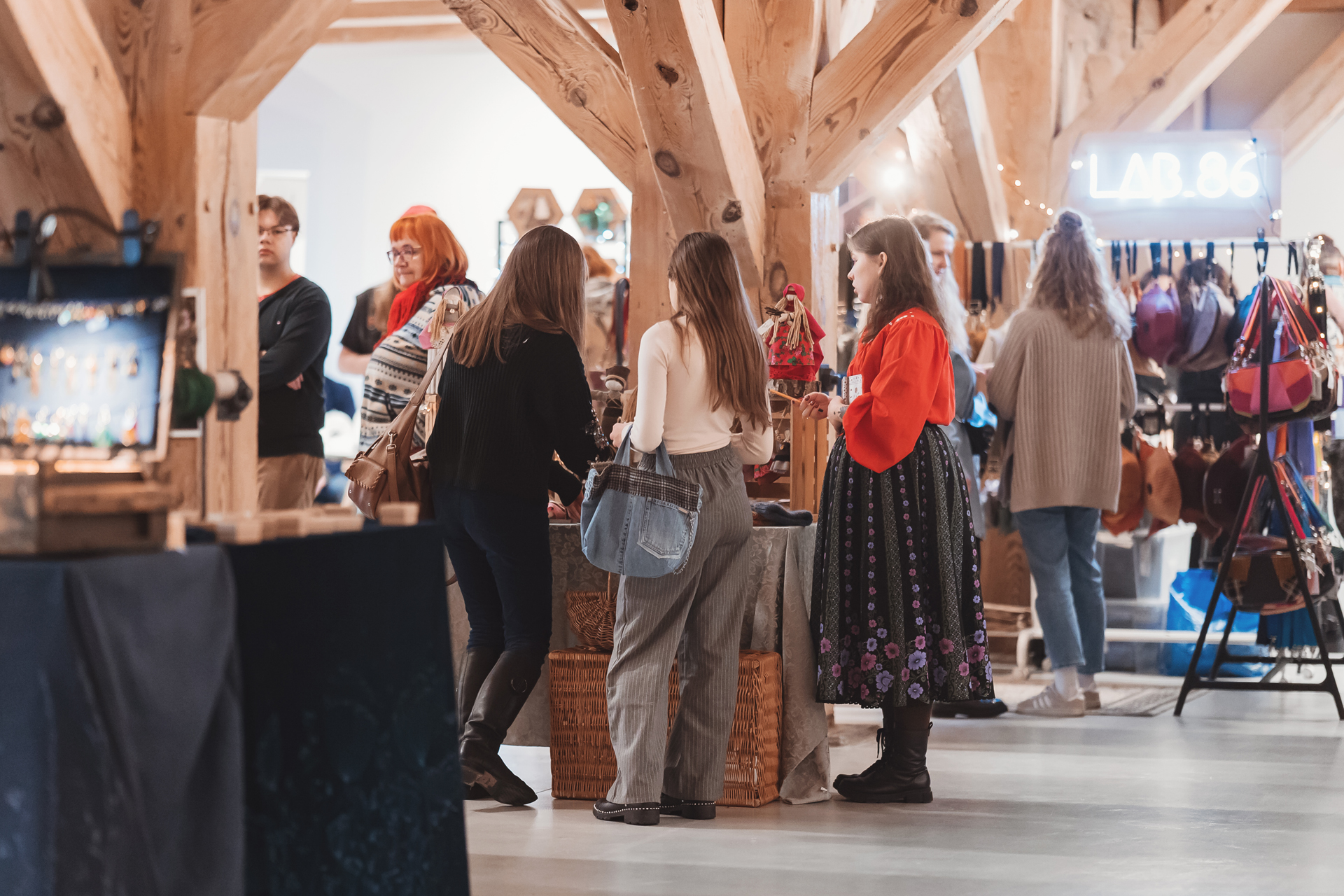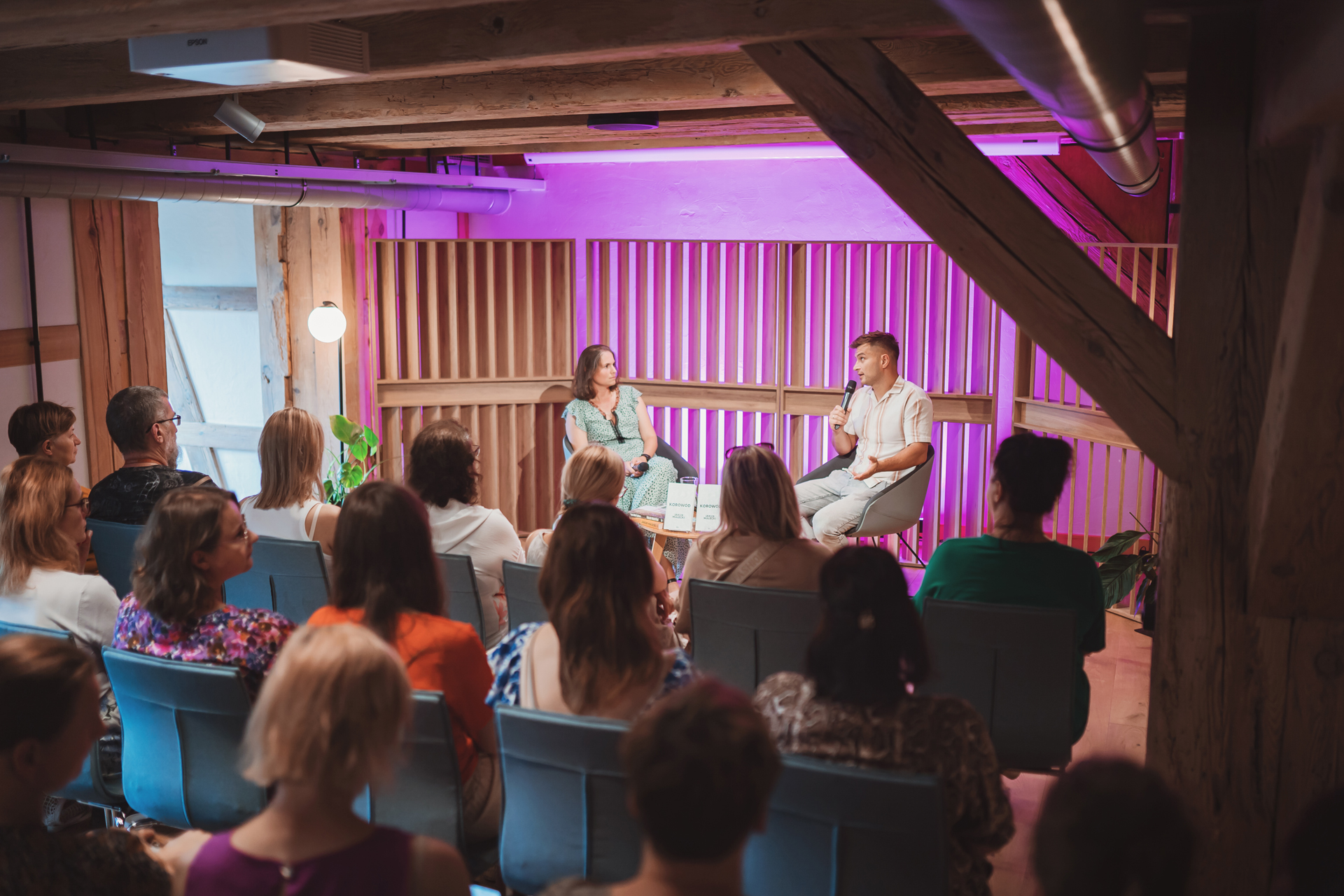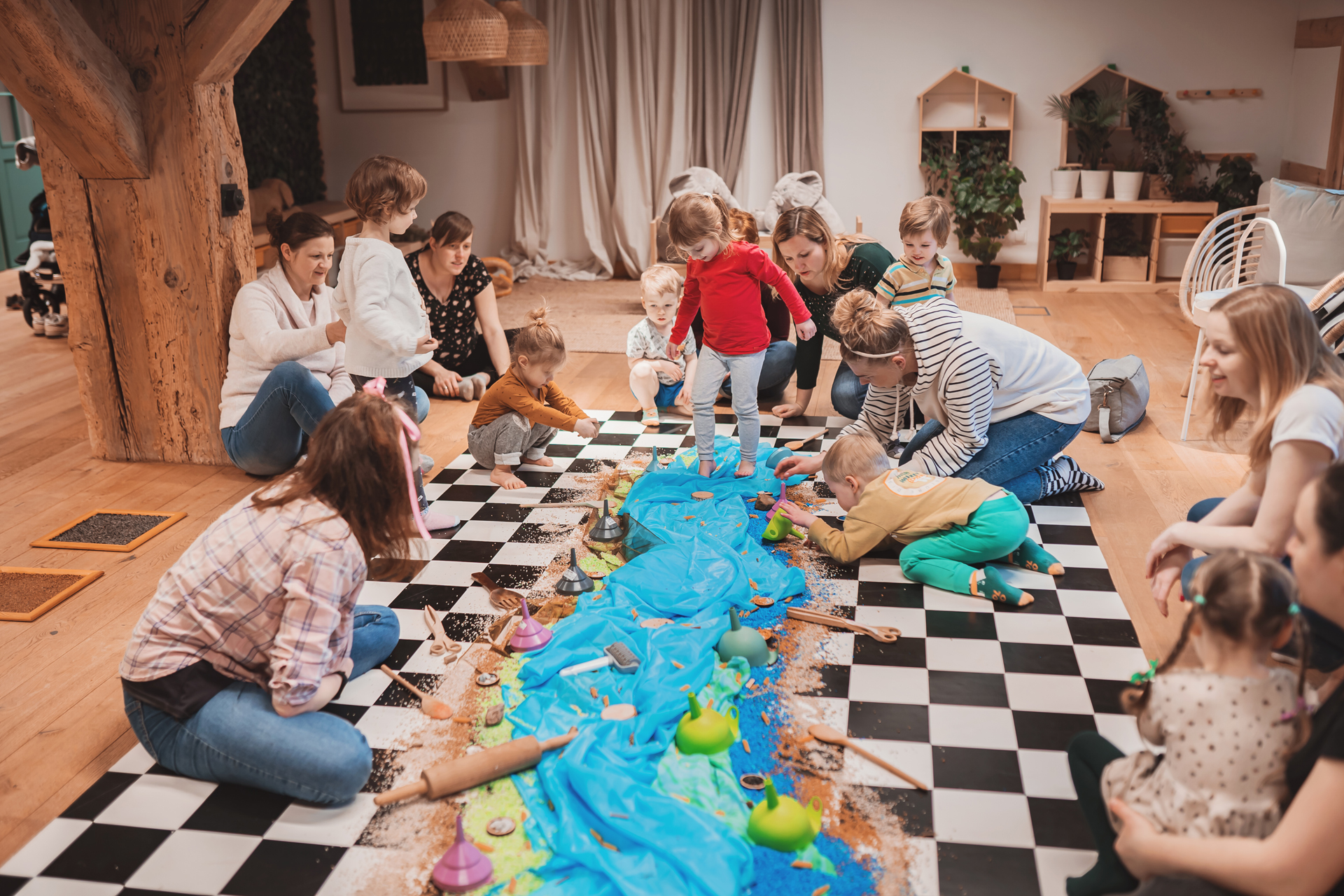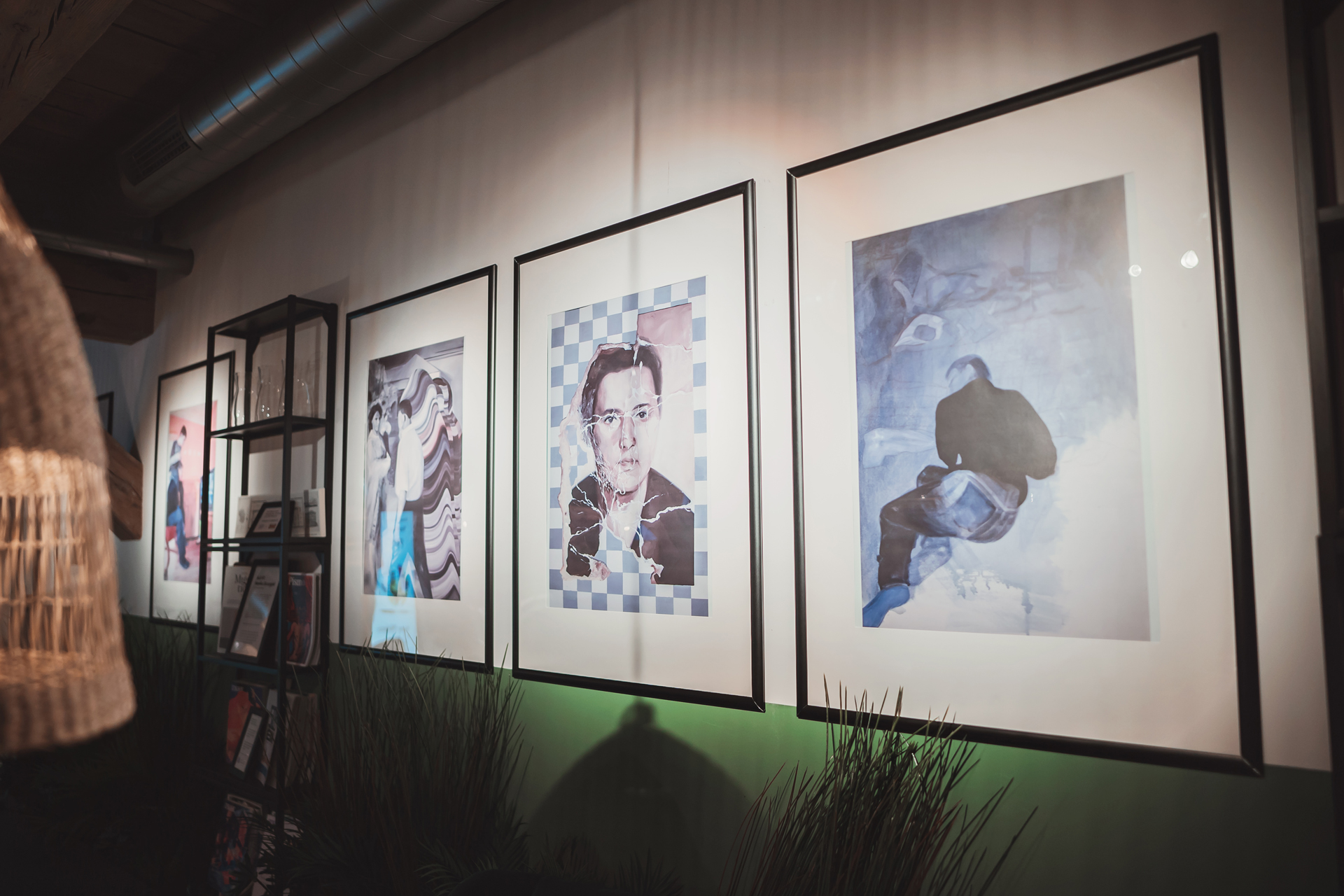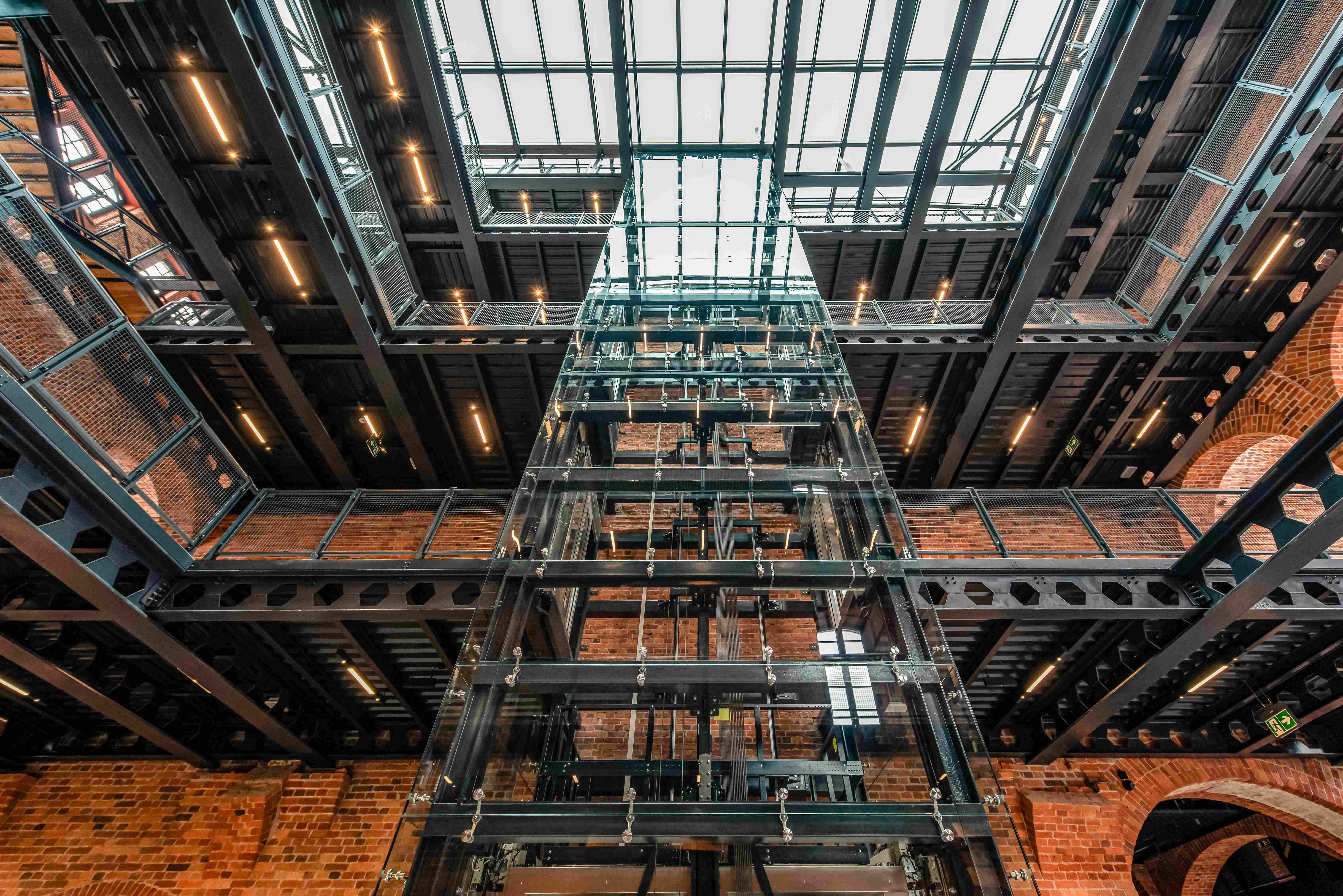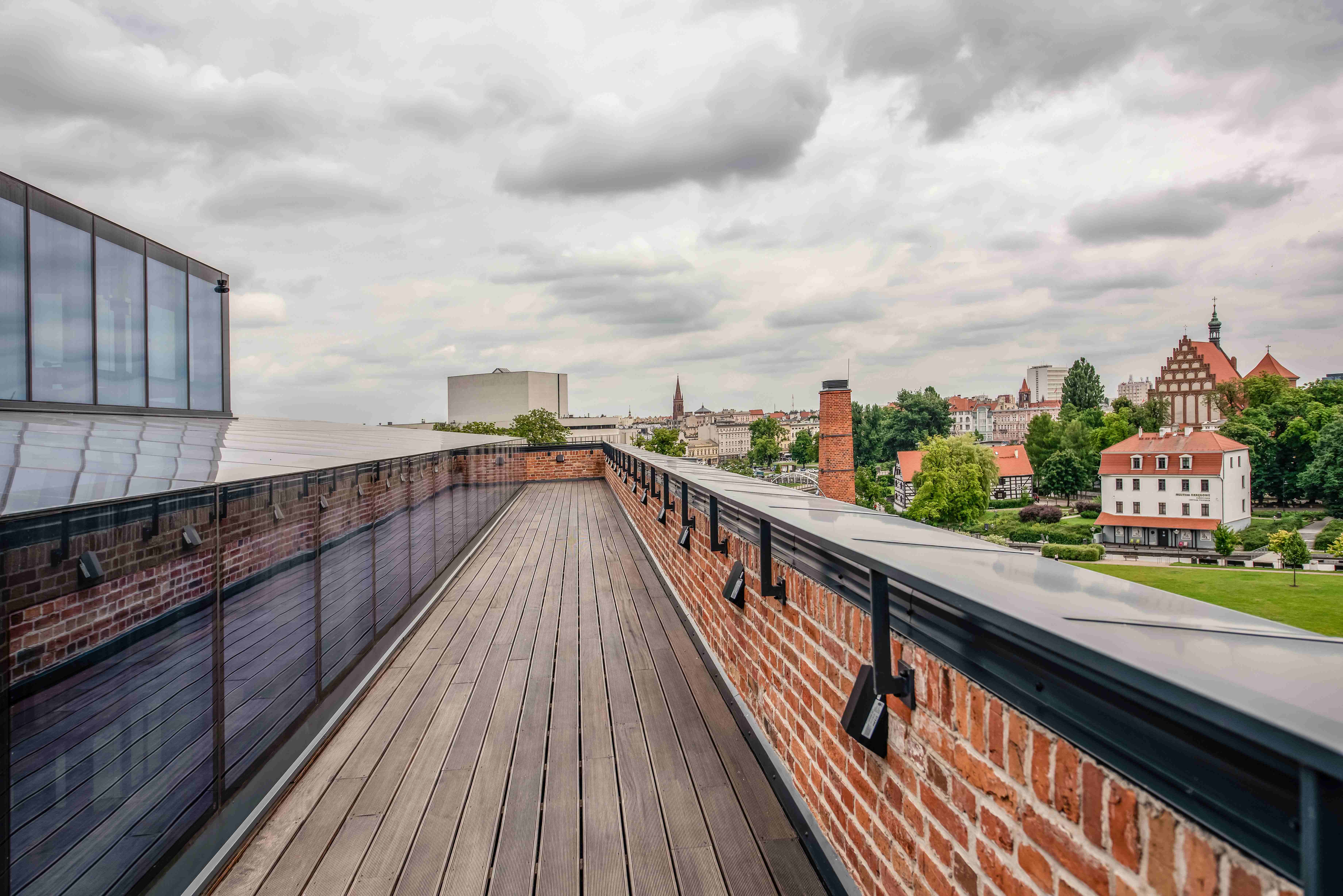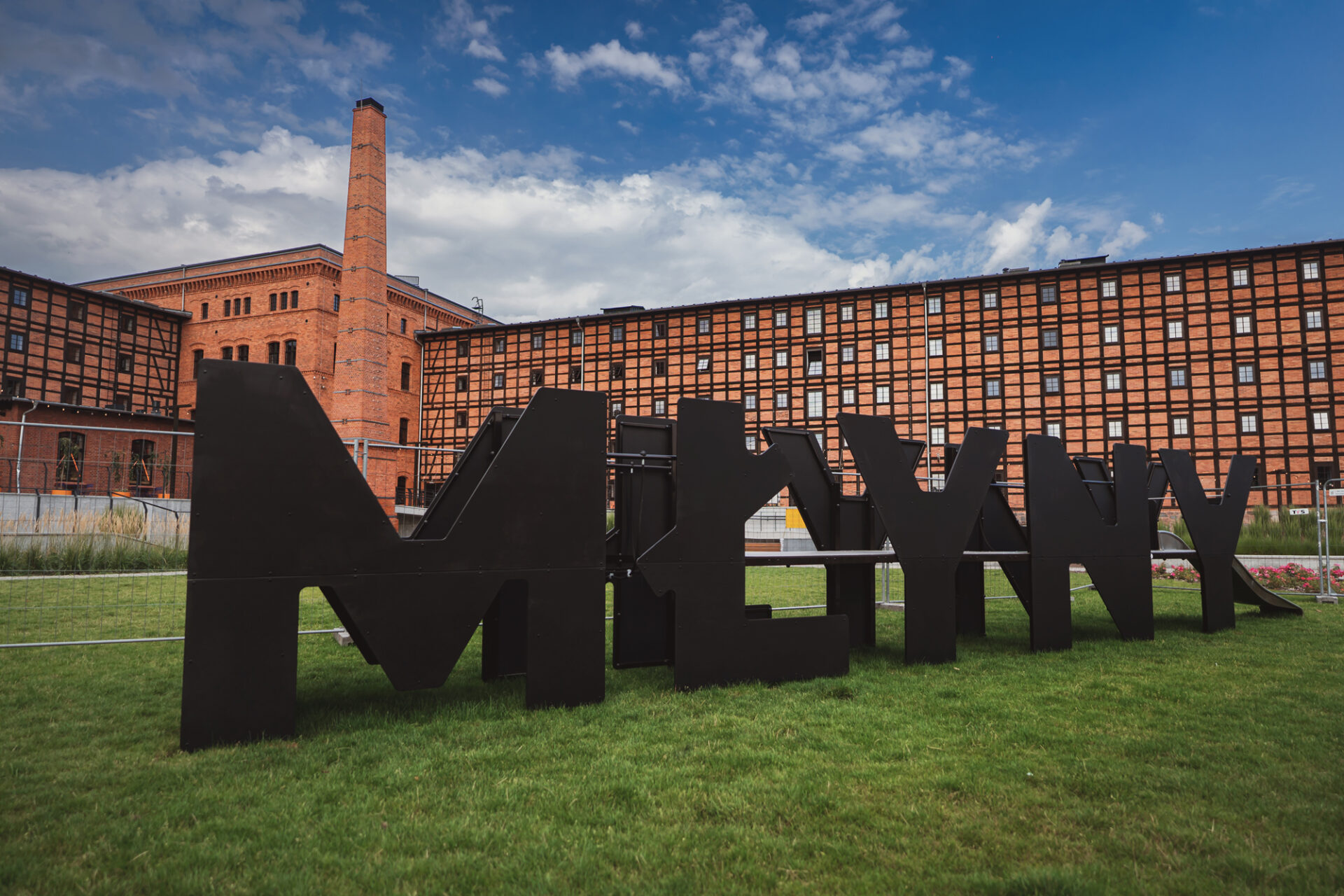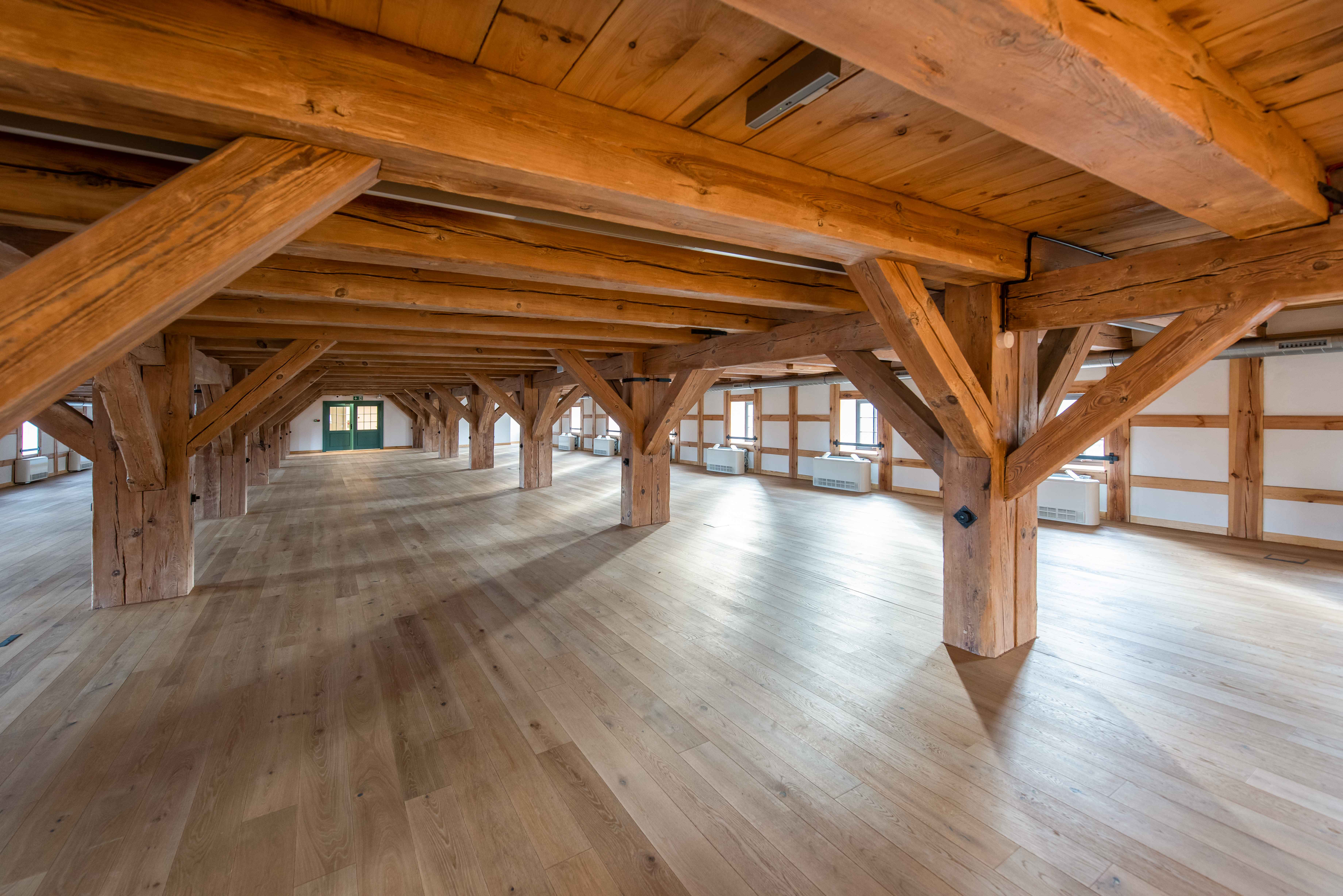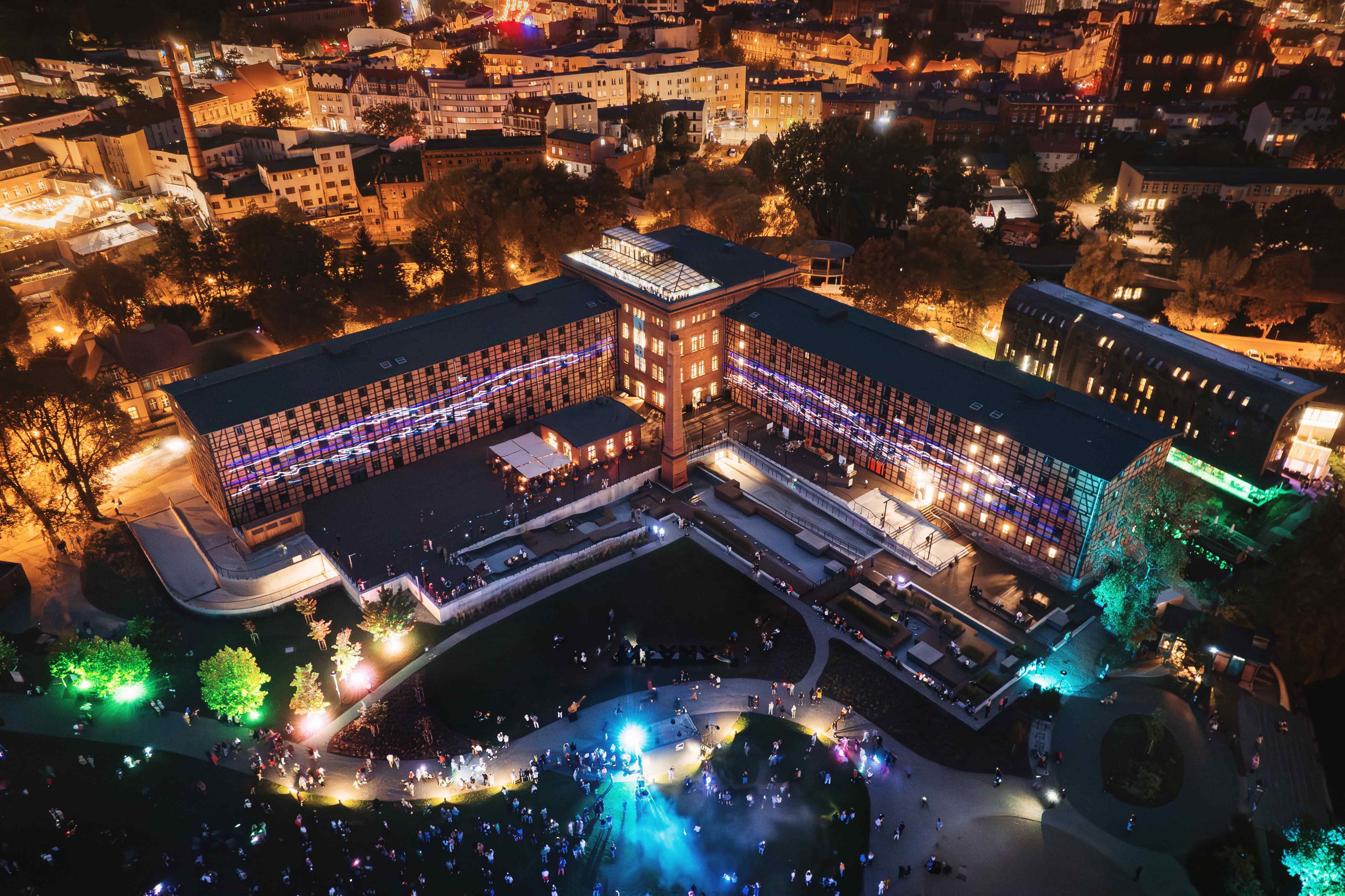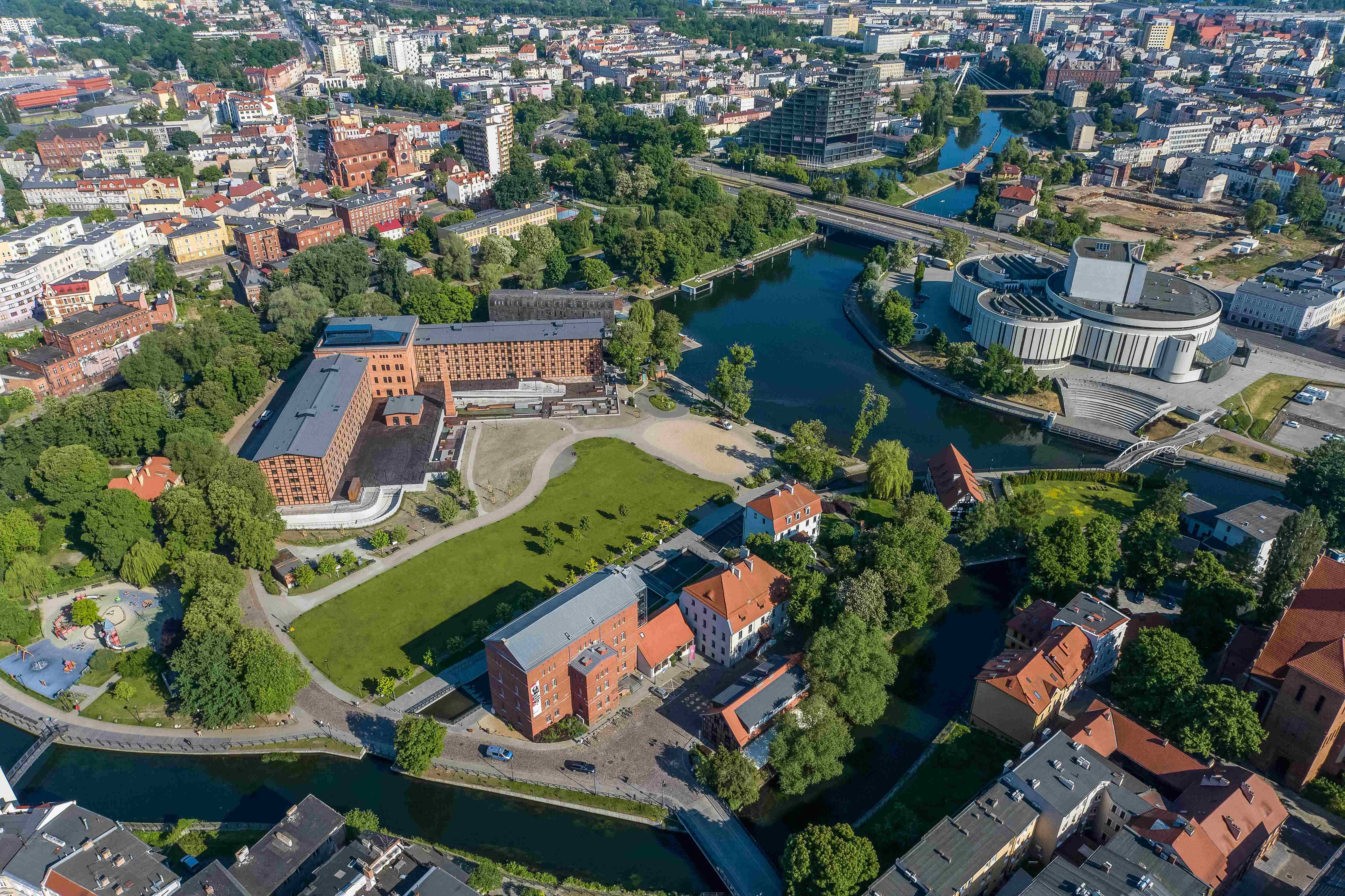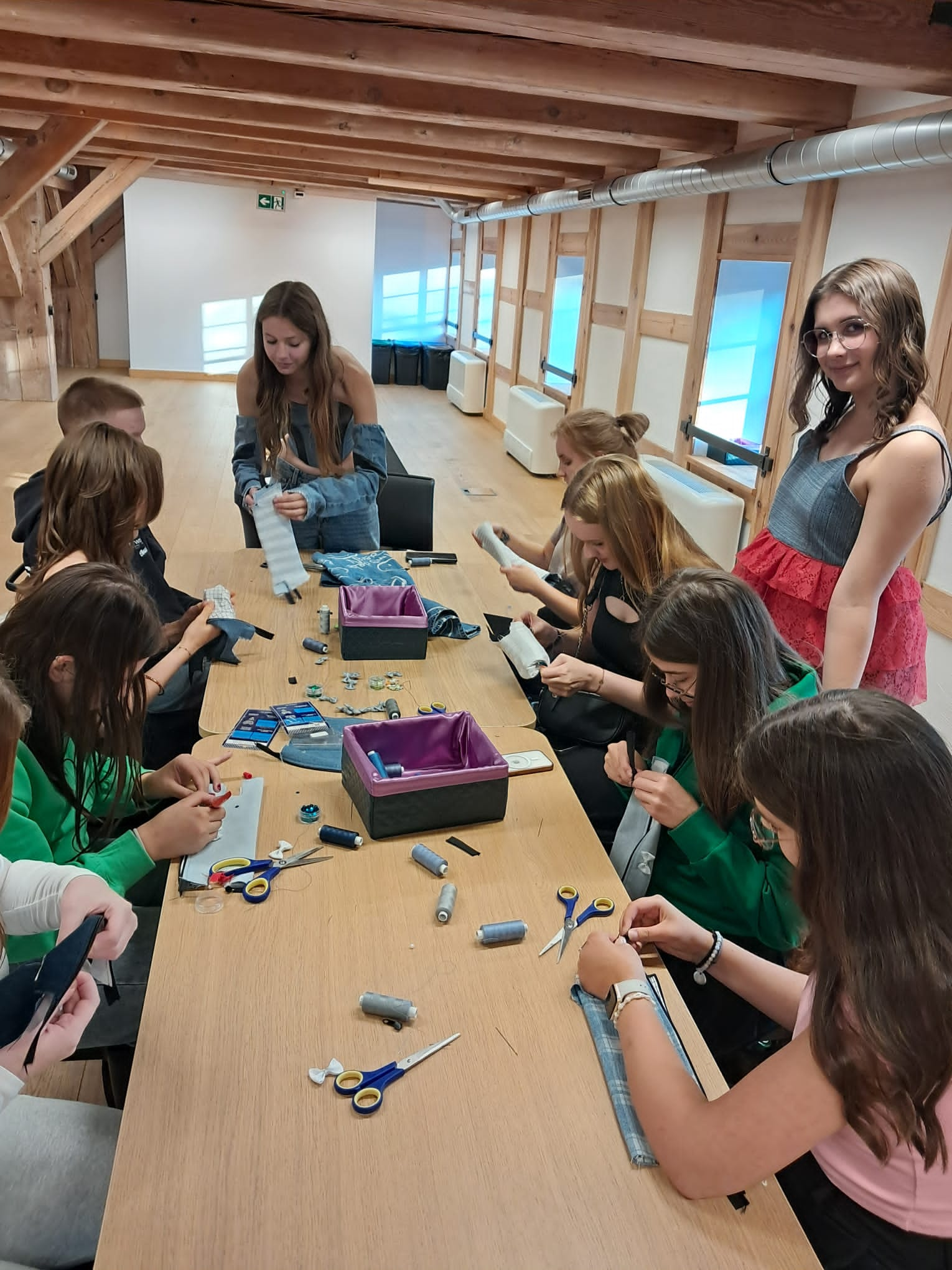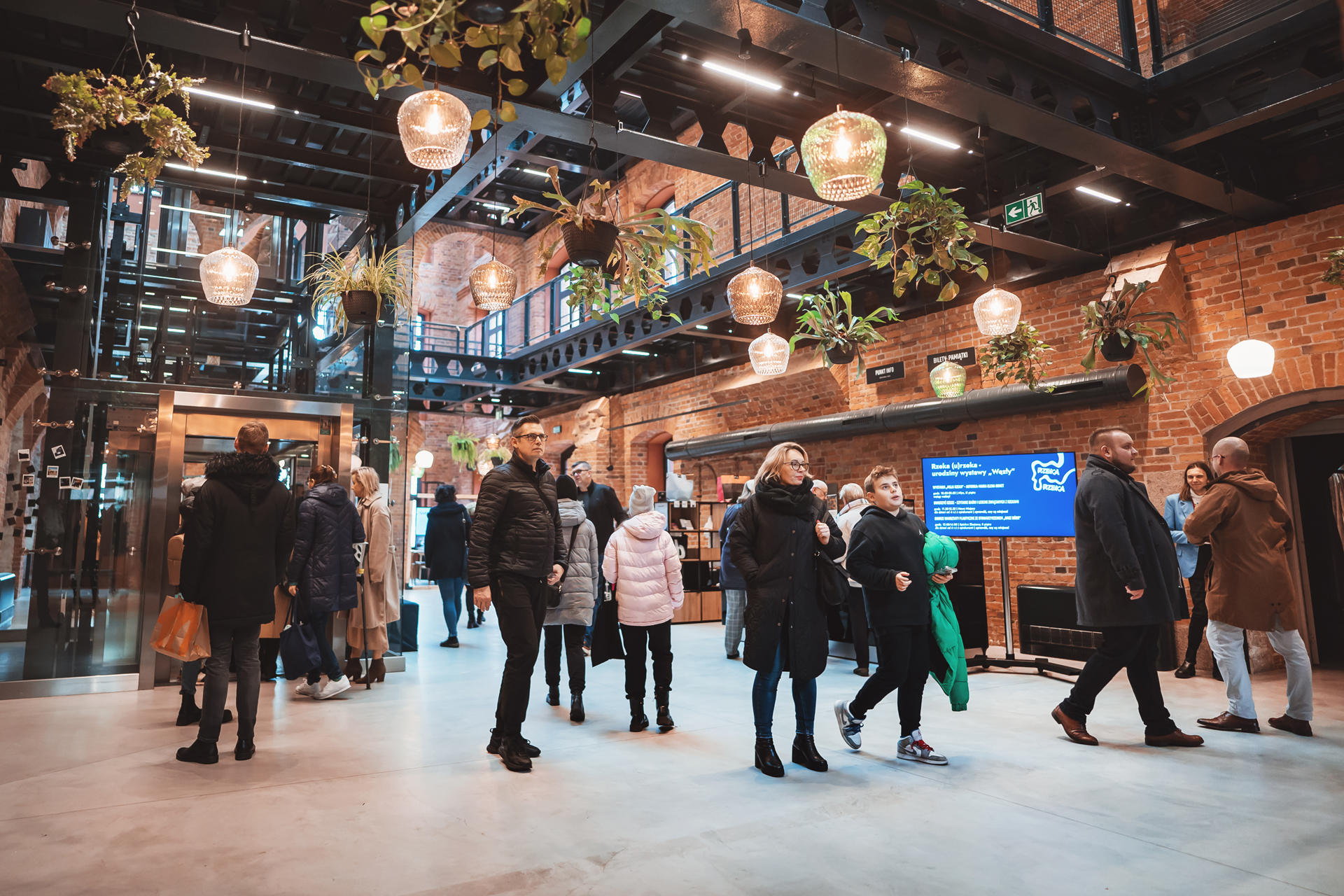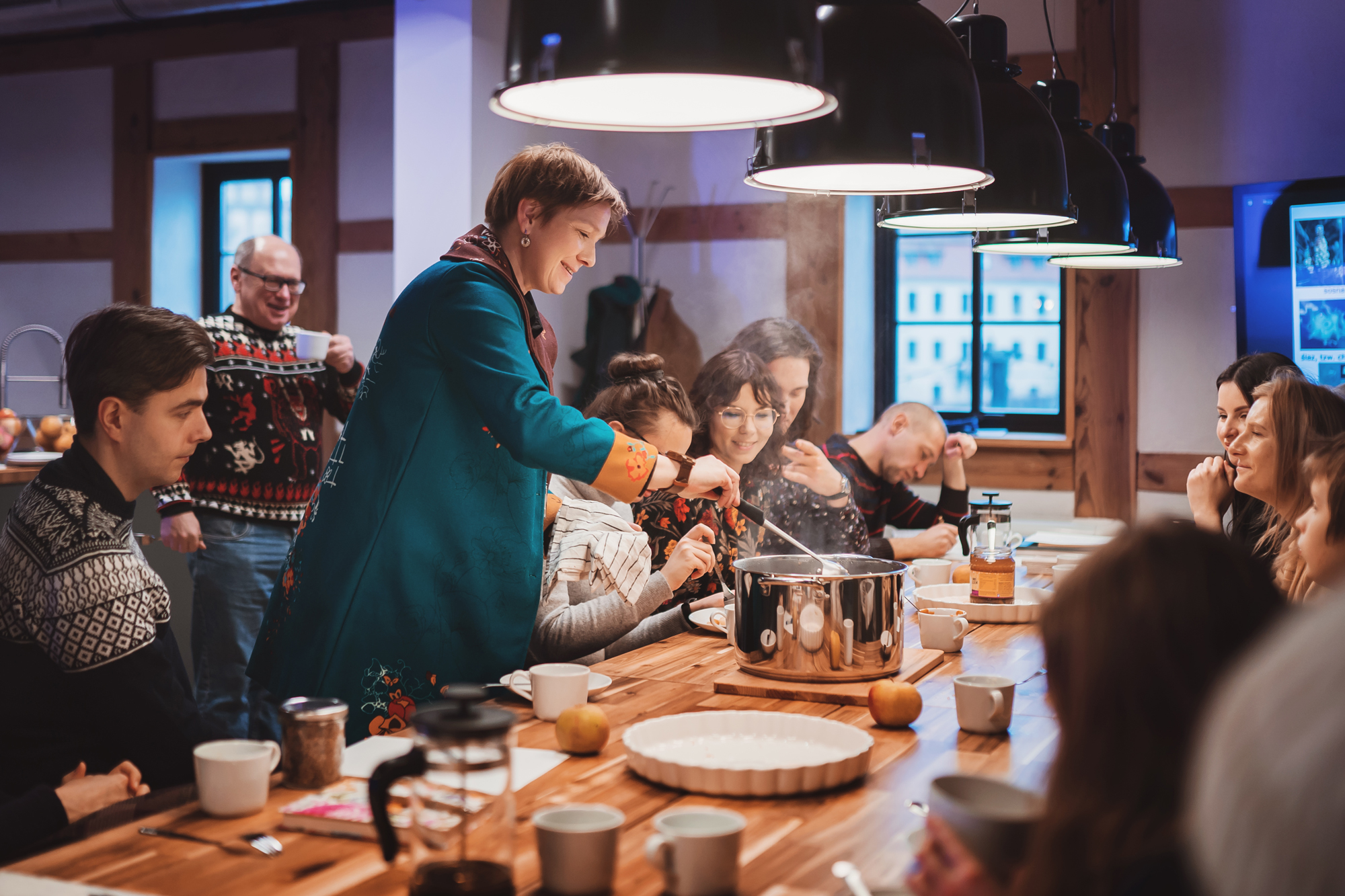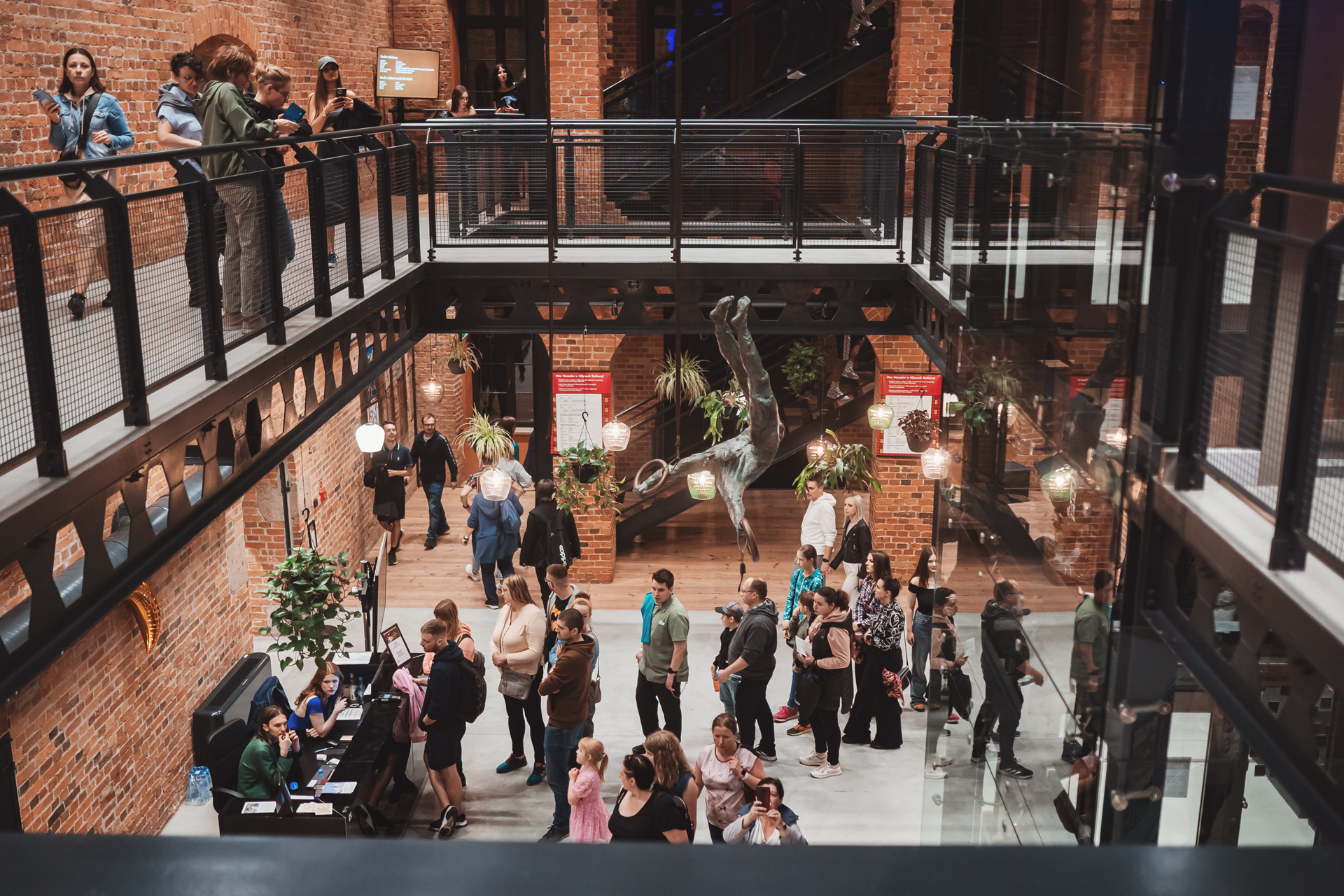Prioritising the places and people that need it the most
Revitalization of “Rother’s Mills”
Revitalization of “Rother’s Mills” in Bydgoszcz
Rother's Mills is a revitalized post-industrial complex in Bydgoszcz, combining heritage with modernity. It offers interactive exhibitions, education, space for NGOs and artists. Accessible to all, it integrates the community, develops tourism and promotes innovation. Visited by hundreds of thousands of people a year, it is a symbol of renewal and participation.
Poland
National
Mainly urban
It refers to a physical transformation of the built environment (hard investment)
Yes
2023-07-31
Yes
ERDF : European Regional Development Fund
No
No
As an individual
The Rother's Mills project responds to the challenges of The New European Bauhaus Prizes 2025 competition by promoting sustainable development through the preservation and adaptation of cultural heritage, revitalizing degraded space and promoting local identity and sustainable tourism.
Aesthetics and quality of experience are ensured by renovating the complex with respect for architecture, integrating modern design, creating a multifunctional space and combining history, culture and gastronomy.
Social inclusion is realized through architectural accessibility, inclusive public space and integration through events, a community café and support for marginalized groups.
The project focuses on participation and engagement, involving citizens in decision-making, collaborating with organizations, artists and authorities, and offering micro-grant programs. Innovation is expressed in the interdisciplinary blending of heritage, science and culture, participatory management, adaptive approaches to revitalization and integration into urban space, and transdisciplinarity is evidenced by collaborations in fields such as architecture, conservation, engineering, museology, social sciences and cultural management.
Rother's Mills responds to global challenges by offering local solutions for heritage preservation, sustainable urban development, access to education, creating inclusive spaces, developing brownfield sites, increasing civic participation and sustainable tourism development.
Key elements of the project are transferable and replicable, including an interdisciplinary approach, adaptive management, the concept of a “living museum,” and a model of cross-sector collaboration and continuous improvement. Rothera Mills is an exemplary example of a transformation that promotes sustainability and combines heritage with innovation, responding to community needs.
Aesthetics and quality of experience are ensured by renovating the complex with respect for architecture, integrating modern design, creating a multifunctional space and combining history, culture and gastronomy.
Social inclusion is realized through architectural accessibility, inclusive public space and integration through events, a community café and support for marginalized groups.
The project focuses on participation and engagement, involving citizens in decision-making, collaborating with organizations, artists and authorities, and offering micro-grant programs. Innovation is expressed in the interdisciplinary blending of heritage, science and culture, participatory management, adaptive approaches to revitalization and integration into urban space, and transdisciplinarity is evidenced by collaborations in fields such as architecture, conservation, engineering, museology, social sciences and cultural management.
Rother's Mills responds to global challenges by offering local solutions for heritage preservation, sustainable urban development, access to education, creating inclusive spaces, developing brownfield sites, increasing civic participation and sustainable tourism development.
Key elements of the project are transferable and replicable, including an interdisciplinary approach, adaptive management, the concept of a “living museum,” and a model of cross-sector collaboration and continuous improvement. Rothera Mills is an exemplary example of a transformation that promotes sustainability and combines heritage with innovation, responding to community needs.
XIX-century Mill reclaimed for meeting space
Center of culture and science
Meeting and integration space
A place to spend leisure time
A good place for ...
Revitalization of “Rother’s Mills” in Bydgoszcz in terms of sustainable development are:
1. protection and adaptation of cultural heritage:
The historic Rother’s Mills complex, the largest piece of preserved industrial architecture on Mill Island, was built in 1846-51. After years of negligence, in 2013 the city authorities bought the building and undertook its revitalization, creating Science and Cultural Center Rorher’s Mills. The symbolic culmination of the restoration was the opening of the “Mill-Machine” exhibition in December 2023, combining history and science through interactive exhibits.
2 Revitalization:
Transformation of degraded space into a vibrant center for culture, education and science enabled the creation of an attractive public space. Construction work adapted the building to its new functions, preserving original elements such as wooden beams, brick walls and cast-iron columns.
3. Inclusivity and accessibility:
The facility is adapted to the needs of people with disabilities, offering elevators, TotuPoint navigation system, induction loops and soundproofing headphones. Cultural and educational offer reaches various audience.
4. Promoting local identity and economy:
Two exhibitions on Bydgoszcz's heritage have been opened at the facility. Events promoting regional food, crafts and design are held regularly, and the space is made available to local artists.
5 Development of sustainable tourism:
Mill Island with the Rother’s Mills was among the winners of the National Geographic Traveler poll for “Wonders of Poland 2023.” The Mills also received the title of The Best Tourist Product 2023 - PTO Certificate. The number of visitors is steadily increasing: 2021 - 1150 people, 2022 - 149,521, 2023 - 174,440, and 2024 - 235,918 people.
1. protection and adaptation of cultural heritage:
The historic Rother’s Mills complex, the largest piece of preserved industrial architecture on Mill Island, was built in 1846-51. After years of negligence, in 2013 the city authorities bought the building and undertook its revitalization, creating Science and Cultural Center Rorher’s Mills. The symbolic culmination of the restoration was the opening of the “Mill-Machine” exhibition in December 2023, combining history and science through interactive exhibits.
2 Revitalization:
Transformation of degraded space into a vibrant center for culture, education and science enabled the creation of an attractive public space. Construction work adapted the building to its new functions, preserving original elements such as wooden beams, brick walls and cast-iron columns.
3. Inclusivity and accessibility:
The facility is adapted to the needs of people with disabilities, offering elevators, TotuPoint navigation system, induction loops and soundproofing headphones. Cultural and educational offer reaches various audience.
4. Promoting local identity and economy:
Two exhibitions on Bydgoszcz's heritage have been opened at the facility. Events promoting regional food, crafts and design are held regularly, and the space is made available to local artists.
5 Development of sustainable tourism:
Mill Island with the Rother’s Mills was among the winners of the National Geographic Traveler poll for “Wonders of Poland 2023.” The Mills also received the title of The Best Tourist Product 2023 - PTO Certificate. The number of visitors is steadily increasing: 2021 - 1150 people, 2022 - 149,521, 2023 - 174,440, and 2024 - 235,918 people.
Rother’s Mills has become not only a tourist attraction, but above all a place that actively shapes the cultural identity of the city and the region, offering residents and visitors an unique educational and cultural experience in an inspiring historic setting.
Renovation of the historic 19th century complex respecting the original elements. The need to preserve the original architectural fabric was identified in both the building's mass restoration project and the design as the primary value shaping the interior space. Highlighting the existing structure of the buildings and emphasizing the historical character of the site was the main goal of the designers. Thanks to the work of many experts and architects, it was possible to create an impressive space that impresses with its monumental industrial architecture. At the same time, while the interiors were designed, the principle of not interfering with the original architectural form of the buildings was followed.
Modern design was integrated with the historical character, creating unique interiors where design harmoniously interacts with the industrial heritage.
The adaptation of the building into a Science and Culture Center has made it possible to create a multifunctional cultural space, where exhibitions, concerts, lectures, workshops and scientific demonstrations are organized. The Mills are the space to realise residents' ideas and the event of local organizations, but also international events such as World Canals Conference - WCC.
Rother’s Mills is the place where the preservation of industrial heritage is effectively combined with modern cultural and educational functions: history, historic architecture and culture - through exhibitions, vernissages and cultural events; education - through interactive permanent and temporary exhibitions and educational activities; meeting point thanks to our terrace with fountains, surrounding green spaces and 4 gastronomy facilities.
Renovation of the historic 19th century complex respecting the original elements. The need to preserve the original architectural fabric was identified in both the building's mass restoration project and the design as the primary value shaping the interior space. Highlighting the existing structure of the buildings and emphasizing the historical character of the site was the main goal of the designers. Thanks to the work of many experts and architects, it was possible to create an impressive space that impresses with its monumental industrial architecture. At the same time, while the interiors were designed, the principle of not interfering with the original architectural form of the buildings was followed.
Modern design was integrated with the historical character, creating unique interiors where design harmoniously interacts with the industrial heritage.
The adaptation of the building into a Science and Culture Center has made it possible to create a multifunctional cultural space, where exhibitions, concerts, lectures, workshops and scientific demonstrations are organized. The Mills are the space to realise residents' ideas and the event of local organizations, but also international events such as World Canals Conference - WCC.
Rother’s Mills is the place where the preservation of industrial heritage is effectively combined with modern cultural and educational functions: history, historic architecture and culture - through exhibitions, vernissages and cultural events; education - through interactive permanent and temporary exhibitions and educational activities; meeting point thanks to our terrace with fountains, surrounding green spaces and 4 gastronomy facilities.
Three principles guiding Rother’s Mills' program choices:
1. the principle of scientific integrity: Presentation of content, methods and practices on which there is scientific consensus, including when the space is made available to external organizers.
2. principle of accessibility: Ensuring that events are fully accessible to people with special needs, ensuring that messages are clear, e.g. creating pre-guides to events.
3 equality principle: Ensuring balanced gender representation in program activities, exploring and implementing opportunities to ensure representation of underrepresented groups.
Main objectives of the Rother’s Mills revitalization project in terms of inclusivity:
1. architectural accessibility:
Two Quality Marks have been awarded in 2024 in the category of disability-friendly facility and service. The team is working to continuously adapt the facility for people with different needs.
2 Inclusive public space:
Free use of the facility's space, including the observation deck and outdoor terrace. Most events are free of charge. Possibility of free use of the space by external entities if their activities are in line with the goals of the institution. Low ticket prices for permanent exhibitions, often reduced on holidays and other occasions.
3 Social integration:
- The Rother’s Mills has become a meeting and integration space for various social groups, offering a variety of events and activities.
- The New Place Café is a space open to cross-cultural creative activities, conversations and stories. Residents of Bydgoszcz meet here, but not only individuals, but also collectives and organizations that work for tolerance, equality and minority rights.
- Providing space for an association which crated a meeting place for mothers and children from Ukraine in 2022, currently functioning as an inclusive space for all.
- Urban Lab - City for the Young as a space for dialogue, cooperation and debate about the future.
1. the principle of scientific integrity: Presentation of content, methods and practices on which there is scientific consensus, including when the space is made available to external organizers.
2. principle of accessibility: Ensuring that events are fully accessible to people with special needs, ensuring that messages are clear, e.g. creating pre-guides to events.
3 equality principle: Ensuring balanced gender representation in program activities, exploring and implementing opportunities to ensure representation of underrepresented groups.
Main objectives of the Rother’s Mills revitalization project in terms of inclusivity:
1. architectural accessibility:
Two Quality Marks have been awarded in 2024 in the category of disability-friendly facility and service. The team is working to continuously adapt the facility for people with different needs.
2 Inclusive public space:
Free use of the facility's space, including the observation deck and outdoor terrace. Most events are free of charge. Possibility of free use of the space by external entities if their activities are in line with the goals of the institution. Low ticket prices for permanent exhibitions, often reduced on holidays and other occasions.
3 Social integration:
- The Rother’s Mills has become a meeting and integration space for various social groups, offering a variety of events and activities.
- The New Place Café is a space open to cross-cultural creative activities, conversations and stories. Residents of Bydgoszcz meet here, but not only individuals, but also collectives and organizations that work for tolerance, equality and minority rights.
- Providing space for an association which crated a meeting place for mothers and children from Ukraine in 2022, currently functioning as an inclusive space for all.
- Urban Lab - City for the Young as a space for dialogue, cooperation and debate about the future.
A “New Place” Café has been created in Rother’s Mills. - space dedicated to civic activities and social integration. Residents of Bydgoszcz meet here, but also individuals, collectives and organizations that work for tolerance, equality and minority rights in the broadest sense. Events at the New Place include periodic workshops, language conversations “Mill’s Talks”, film screenings and meetings. New Place was also an exhibition space as part of 5x5 - series of mini-exhibitions.
Along with events and permanent exhibitions, Creative Hub is a key element of the offer, around which the program offer for 2025 will be built. Hub is the place which attract creative people. As an organizer, we want to provide necessary space and support for networking, community engagement and development to the individuals and organizations working in the fields of creativity, culture and new technologies.
Youth Microgrant Program was created, targeting people aged 14-26, living or studying in the area of Bydgoszcz for the implementation of cultural and educational projects, as well as microgrants aimed at informal groups and NGOs.
Space was made available to an association that created a meeting place for mothers and children fleeing Ukraine in 2022. This space now functions as an inclusive space for all, including in particular parents of children with disabilities.
Along with events and permanent exhibitions, Creative Hub is a key element of the offer, around which the program offer for 2025 will be built. Hub is the place which attract creative people. As an organizer, we want to provide necessary space and support for networking, community engagement and development to the individuals and organizations working in the fields of creativity, culture and new technologies.
Youth Microgrant Program was created, targeting people aged 14-26, living or studying in the area of Bydgoszcz for the implementation of cultural and educational projects, as well as microgrants aimed at informal groups and NGOs.
Space was made available to an association that created a meeting place for mothers and children fleeing Ukraine in 2022. This space now functions as an inclusive space for all, including in particular parents of children with disabilities.
Representatives of various communities participated in the process of designing the Rother’s Mills offer. In the 2020, a study was conducted, in which representatives of the Culture Park,Bydgoszcz families, companies from the creative industry,NGOs,BEIs and experts from the areas of catering, event organization and business strategy development worked together.
Residents are included in decision-making processes regarding the operation of the facility and the institution. Employees collect feedback from visitors on a daily basis, which makes citizens act not only as recipients, but also as co-creators of the Rother’s Mills' offer. Residents took part in public consultations and participatory workshops, sharing opinions and ideas, which helped to adjust the cultural and educational offer.
Local NGOs and informal groups cooperate in organizing events, and the opportunity to implement their own projects in the Rother’s Mills space enriches the program offer. Local artists and representatives of the creative industry co-create the cultural offer, contributing to the unique character of the institution.
The authorities of the City of Bydgoszcz are supported at the regional level.All work on the facility was consulted with the conservator of historical monuments and the Council for Aesthetics of the City of Bydgoszcz. The Marshal's Office of the Kuyavian-Pomeranian Voivodeship promotes and supports the revitalization of the Rother’s Mills by submitting a recommendation to the NEW competition.
The implementation of the revitalization of the Mills included several stages subsidized by European Union funds granted at the regional and national level, which enabled the project to be implemented in accordance with European standards.
Added value of stakeholder involvement:
-adaptation of the project to the needs of users
-increasing public acceptance
-enrichment of cultural and educational offerings
-creation of a model of participatory management of the institution
Residents are included in decision-making processes regarding the operation of the facility and the institution. Employees collect feedback from visitors on a daily basis, which makes citizens act not only as recipients, but also as co-creators of the Rother’s Mills' offer. Residents took part in public consultations and participatory workshops, sharing opinions and ideas, which helped to adjust the cultural and educational offer.
Local NGOs and informal groups cooperate in organizing events, and the opportunity to implement their own projects in the Rother’s Mills space enriches the program offer. Local artists and representatives of the creative industry co-create the cultural offer, contributing to the unique character of the institution.
The authorities of the City of Bydgoszcz are supported at the regional level.All work on the facility was consulted with the conservator of historical monuments and the Council for Aesthetics of the City of Bydgoszcz. The Marshal's Office of the Kuyavian-Pomeranian Voivodeship promotes and supports the revitalization of the Rother’s Mills by submitting a recommendation to the NEW competition.
The implementation of the revitalization of the Mills included several stages subsidized by European Union funds granted at the regional and national level, which enabled the project to be implemented in accordance with European standards.
Added value of stakeholder involvement:
-adaptation of the project to the needs of users
-increasing public acceptance
-enrichment of cultural and educational offerings
-creation of a model of participatory management of the institution
The revitalization project of Rother’s Mills in Bydgoszcz combines different fields of knowledge and specialties:
1. Architecture and historic preservation: Renovation of a 19th-century complex with preservation of original elements and integration of modern design.
2. Revitalization: Transforming a degraded area into a center for culture and science, the final element of Mill Island revitalizaion.
3. Engineering and technology: Using 3D scanning to inventory and create digital models of the site.
4. Museology and education: Creating exhibitions, such as the “Mill-Machine,” that combine history with the popularization of science.
5. social sciences: Implementation of social participation programs, including “Youth Microgrants,” “New Place” social café, Urban Lab - City for the Young.
6 Cultural management: Development and implementation of a strategy for the operation of the Science and Culture Center.
Each element of revitalization is the result of cooperation between representatives of different fields. Adaptation of the historic building is the result of the work of architects, conservators and engineers. Exhibitions are the result of the cooperation between museum professionals, educators and technologists. Specialists in cultural management and social sciences, design the program offer and strategy for the development of the institution.
The added value of this process:
1. a comprehensive approach that takes into account architectural, cultural, educational and social aspects.
2. creation of an unique space that combines history, modernity and science.
3. Increasing the accessibility and attractiveness of the facility for different audiences.
4. Effective use of modern technologies.
5. Strengthening social participation and involvement of young people in the cultural life of the city.
1. Architecture and historic preservation: Renovation of a 19th-century complex with preservation of original elements and integration of modern design.
2. Revitalization: Transforming a degraded area into a center for culture and science, the final element of Mill Island revitalizaion.
3. Engineering and technology: Using 3D scanning to inventory and create digital models of the site.
4. Museology and education: Creating exhibitions, such as the “Mill-Machine,” that combine history with the popularization of science.
5. social sciences: Implementation of social participation programs, including “Youth Microgrants,” “New Place” social café, Urban Lab - City for the Young.
6 Cultural management: Development and implementation of a strategy for the operation of the Science and Culture Center.
Each element of revitalization is the result of cooperation between representatives of different fields. Adaptation of the historic building is the result of the work of architects, conservators and engineers. Exhibitions are the result of the cooperation between museum professionals, educators and technologists. Specialists in cultural management and social sciences, design the program offer and strategy for the development of the institution.
The added value of this process:
1. a comprehensive approach that takes into account architectural, cultural, educational and social aspects.
2. creation of an unique space that combines history, modernity and science.
3. Increasing the accessibility and attractiveness of the facility for different audiences.
4. Effective use of modern technologies.
5. Strengthening social participation and involvement of young people in the cultural life of the city.
The project to revitalize the Rother’s Mills in Bydgoszcz is distinguished by its innovative approach in several key aspects:
1. interdisciplinary linking of heritage, science and culture:
- Transforming a historical, industrial facility into a modern center of science and culture while preserving its historical character.
- Creating interactive exhibitions, such as “Mill-Machine,” that combine the history of milling our history/heritage with the popularization of science.
2 Participatory management model:
- Actively involve residents and local organizations in decision-making and program offerings.
- Introduce programs such as “Youth Microgrants” to encourage youth and young adults to actively participate in the cultural life of the city.
3 Adaptive approach to revitalization:
- Phased project implementation, taking into account available funding sources and changing user needs.
- Flexible planning of the space, allowing it to adapt to a variety of functions and events.
4 Integration with urban space:
- Creation of a publicly accessible space, including the terrace with the fountain, which contributes to revive this part of the city for example for those seeking respite on hot days,
- Use of the site as a catalyst for tourism and local economic development.
5 Innovative approach to accessibility:
- Appointing an accessibility coordinator and constantly seeking for improvements in the facility and program offer accessibility.
- Designing the space and program offer with diverse audiences in mind, including the elder people and families with children with disabilities.
- Working with and for people with disabilities resulted in obtaining architectural and service accessibility certificates.
1. interdisciplinary linking of heritage, science and culture:
- Transforming a historical, industrial facility into a modern center of science and culture while preserving its historical character.
- Creating interactive exhibitions, such as “Mill-Machine,” that combine the history of milling our history/heritage with the popularization of science.
2 Participatory management model:
- Actively involve residents and local organizations in decision-making and program offerings.
- Introduce programs such as “Youth Microgrants” to encourage youth and young adults to actively participate in the cultural life of the city.
3 Adaptive approach to revitalization:
- Phased project implementation, taking into account available funding sources and changing user needs.
- Flexible planning of the space, allowing it to adapt to a variety of functions and events.
4 Integration with urban space:
- Creation of a publicly accessible space, including the terrace with the fountain, which contributes to revive this part of the city for example for those seeking respite on hot days,
- Use of the site as a catalyst for tourism and local economic development.
5 Innovative approach to accessibility:
- Appointing an accessibility coordinator and constantly seeking for improvements in the facility and program offer accessibility.
- Designing the space and program offer with diverse audiences in mind, including the elder people and families with children with disabilities.
- Working with and for people with disabilities resulted in obtaining architectural and service accessibility certificates.
The main assumption at the start of the revitalization work was, on the one hand, to save the historical space as much as possible and, on the other hand, to create a modern space that can be fully used for cultural and educational purposes and the popularization of science.
The methodology used in the project to revitalize the Rother’s Mills in Bydgoszcz is based on several key approaches:
1 Integrated planning:
- Comprehensive analysis of the needs of the city, residents and the potential of the site.
- Consideration of architectural, cultural, educational and social aspects.
2. Public participation:
- Organization of public consultations and participatory workshops.
- Involving residents and NGOs in the decision-making process.
- Constant study of user needs and adaptation of offerings.
3 Phased implementation:
- Dividing the project into phases, allowing flexible response to changing conditions and needs.
- Successive opening of additional spaces and introduction of new functions.
4. Interdisciplinary approach:
- Cooperation of specialists from various fields: architects, conservators, museum professionals, educators, technologists.
- Integration of knowledge of historical preservation, modern technology and cultural management.
5 Adaptive management:
- Flexible approach to management of space and program offer.
- Regular evaluation and adjustment of operating strategies.
6. Sustainability:
- Integrating environmental and energy-saving aspects into the revitalization process.
- Promoting local resources and supporting the local economy.
7. Cross-sector cooperation:
- Engaging partners from the public, private and non-governmental sectors.
- Obtaining diverse sources of funding, including EU funds.
8. Permanent learning and development:
- Regular evaluation of activities and collection of feedback from users.
- Openness to new ideas and innovations in the management of the institution.
The methodology used in the project to revitalize the Rother’s Mills in Bydgoszcz is based on several key approaches:
1 Integrated planning:
- Comprehensive analysis of the needs of the city, residents and the potential of the site.
- Consideration of architectural, cultural, educational and social aspects.
2. Public participation:
- Organization of public consultations and participatory workshops.
- Involving residents and NGOs in the decision-making process.
- Constant study of user needs and adaptation of offerings.
3 Phased implementation:
- Dividing the project into phases, allowing flexible response to changing conditions and needs.
- Successive opening of additional spaces and introduction of new functions.
4. Interdisciplinary approach:
- Cooperation of specialists from various fields: architects, conservators, museum professionals, educators, technologists.
- Integration of knowledge of historical preservation, modern technology and cultural management.
5 Adaptive management:
- Flexible approach to management of space and program offer.
- Regular evaluation and adjustment of operating strategies.
6. Sustainability:
- Integrating environmental and energy-saving aspects into the revitalization process.
- Promoting local resources and supporting the local economy.
7. Cross-sector cooperation:
- Engaging partners from the public, private and non-governmental sectors.
- Obtaining diverse sources of funding, including EU funds.
8. Permanent learning and development:
- Regular evaluation of activities and collection of feedback from users.
- Openness to new ideas and innovations in the management of the institution.
Elements adaptable to different cultural, social and economic contexts:
1. Interdisciplinary approach to revitalization:
Collaboration of specialists from different fields in the design and implementation of investment activities, combining historical spaces with modern design and accessibility solutions. Preservation of the monumental industrial structure of the buildings allows to experience the authentic atmosphere of the former mill.
2 The model of adaptive management of industrial heritage and the concept of multifunctional space:
The phased subdivision of the project makes it possible to successively provide space and adapt to changes. The project combines cultural, educational and commercial functions in one facility. Multi-faceted consultation and collaboration with architects helped to create spaces with multiple uses.
3 The “living museum” concept:
Permanent exhibitions, such as “Knots. The Story of a City by the River” and ‘The Mill-Machine,’ engagingly present the history and operation of the site. Rother’s Mills becomes a “living museum” where history is dynamically presented and experienced by visitors, actively engaging them in the process of discovering Bydgoszcz's cultural heritage.
4 A model of intersectoral cooperation, a methodology of public participation and a system of continuous evaluation and improvement:
The institution seeks new solutions and is open to innovations in management. Regular surveys of visitors' needs make it possible to adjust the offer. Programs have been created to mobilise local communities, including “Youth Microgrants” to involve youth in cultural life.
1. Interdisciplinary approach to revitalization:
Collaboration of specialists from different fields in the design and implementation of investment activities, combining historical spaces with modern design and accessibility solutions. Preservation of the monumental industrial structure of the buildings allows to experience the authentic atmosphere of the former mill.
2 The model of adaptive management of industrial heritage and the concept of multifunctional space:
The phased subdivision of the project makes it possible to successively provide space and adapt to changes. The project combines cultural, educational and commercial functions in one facility. Multi-faceted consultation and collaboration with architects helped to create spaces with multiple uses.
3 The “living museum” concept:
Permanent exhibitions, such as “Knots. The Story of a City by the River” and ‘The Mill-Machine,’ engagingly present the history and operation of the site. Rother’s Mills becomes a “living museum” where history is dynamically presented and experienced by visitors, actively engaging them in the process of discovering Bydgoszcz's cultural heritage.
4 A model of intersectoral cooperation, a methodology of public participation and a system of continuous evaluation and improvement:
The institution seeks new solutions and is open to innovations in management. Regular surveys of visitors' needs make it possible to adjust the offer. Programs have been created to mobilise local communities, including “Youth Microgrants” to involve youth in cultural life.
Rother’s Mills, through its multifunctional approach to revitalization, offers local solutions to a number of global challenges, combining heritage preservation with innovative forms of education, culture and public participation. The project to revitalize Rother’s Mills in Bydgoszcz addresses several global challenges through local solutions:
1. The project preserves and adapts a historical 19th century industrial complex, offering a solution to the global problem of architectural heritage decline.
2. Transforming a degraded post-industrial area into a vibrant center for culture and science contributes to sustainable urban development.
3.The establishment of Science and Culture Center with interactive exhibitions such as the “Mill-Machine” addresses the global challenge of access to education and popularization of science.
4. The project takes into account the needs of various social groups, including people with disabilities, which addresses the global challenge of creating inclusive public spaces.
5 The adaptation of former grain mills for cultural and educational purposes is an example of a solution to the problem of developing abandoned industrial facilities.
6 The involvement of residents and NGOs in the revitalization process and operation of the facility addresses the global challenge of increasing civic participation.
7.The establishment of the Rother Mills Science and Cultural Center institution to manage the Rother Mills represents an innovative approach to running a cultural institution.
8. The project contributes to the development of cultural tourism, which addresses the global challenge of sustainable tourism development.
1. The project preserves and adapts a historical 19th century industrial complex, offering a solution to the global problem of architectural heritage decline.
2. Transforming a degraded post-industrial area into a vibrant center for culture and science contributes to sustainable urban development.
3.The establishment of Science and Culture Center with interactive exhibitions such as the “Mill-Machine” addresses the global challenge of access to education and popularization of science.
4. The project takes into account the needs of various social groups, including people with disabilities, which addresses the global challenge of creating inclusive public spaces.
5 The adaptation of former grain mills for cultural and educational purposes is an example of a solution to the problem of developing abandoned industrial facilities.
6 The involvement of residents and NGOs in the revitalization process and operation of the facility addresses the global challenge of increasing civic participation.
7.The establishment of the Rother Mills Science and Cultural Center institution to manage the Rother Mills represents an innovative approach to running a cultural institution.
8. The project contributes to the development of cultural tourism, which addresses the global challenge of sustainable tourism development.
The Rother’s Mills project has brought benefits to both direct beneficiaries (Bydgoszcz residents, tourists, artists, non-governmental organizations) and indirect ones (local entrepreneurs, tourism sector). The revitalization of this facility has contributed to the cultural and economic revival of the city while preserving its industrial heritage.
This project combines the revitalization of historical spaces with modern design, blending high aesthetic values with accessibility through the elimination of architectural barriers and the introduction of improvements for people with disabilities.
The revitalization project has created a multifunctional center for culture and science, where everyone can find space for development. It houses permanent and temporary exhibitions, educational activities, conferences, artistic events, and meetings for those at risk of exclusion (refugees). To encourage youth to co-create the cultural offer, part of the space has been dedicated to Urban Lab, and Microgrants program for informal groups and NGOs has been introduced, enabling the implementation of bottom-up approach projects.
Two permanent exhibitions have been created: "Knots. The story of a City by the River" and "Mill-Machine," which opened at the end of 2023.
In 2024, the facility was visited by 235,918 people.
The Mills also offer an admission free viewing point on the top floor and a large wooden terrace with a fountain.
A social café called "New Place" has been opened, becoming a space for meetings and integration for various social groups, offering diverse events and activities.
Three commercial facilities serving food and beverage have also opened, complementing the institution offer.
All this has resulted in the creation of the place for everyone – city and region residents, tourists, local creators, artists, and educators – in the beautifully revitalized Mill Island, in the very center of Bydgoszcz, in an architecturally stunning facility.
This project combines the revitalization of historical spaces with modern design, blending high aesthetic values with accessibility through the elimination of architectural barriers and the introduction of improvements for people with disabilities.
The revitalization project has created a multifunctional center for culture and science, where everyone can find space for development. It houses permanent and temporary exhibitions, educational activities, conferences, artistic events, and meetings for those at risk of exclusion (refugees). To encourage youth to co-create the cultural offer, part of the space has been dedicated to Urban Lab, and Microgrants program for informal groups and NGOs has been introduced, enabling the implementation of bottom-up approach projects.
Two permanent exhibitions have been created: "Knots. The story of a City by the River" and "Mill-Machine," which opened at the end of 2023.
In 2024, the facility was visited by 235,918 people.
The Mills also offer an admission free viewing point on the top floor and a large wooden terrace with a fountain.
A social café called "New Place" has been opened, becoming a space for meetings and integration for various social groups, offering diverse events and activities.
Three commercial facilities serving food and beverage have also opened, complementing the institution offer.
All this has resulted in the creation of the place for everyone – city and region residents, tourists, local creators, artists, and educators – in the beautifully revitalized Mill Island, in the very center of Bydgoszcz, in an architecturally stunning facility.

